
Author Neil Gaiman visits Zoellner Arts Center
“Coraline,” “Good Omens” and “American Gods,” are all a part of author Neil Gaiman’s repertoire of literature.
The author visited Baker Hall on Nov. 12 to speak about his work, answer questions and sell his signed books to fans.
Gaiman spoke to a nearly sold-out crowd about a few of his past projects, including his book “Good Omens” and the TV show based on it, his work on the English translation of Studio Ghibli’s movie, “Princess Mononoke” and a poem he wrote about Batman.
English major Tim Gerth, ‘27, gave an introduction about Gaiman’s writing portfolio and life accomplishments before he spoke to the audience.
Attendees were given the opportunity to submit questions before and during the talk, which included topics from how to determine whether an idea is good to how to balance ego and impostor syndrome.
Gaiman encouraged the audience to accept that failure is part of life after being asked about the beginning of her career. He said he learned to keep writing even when his work was “bad,” because he trusted that eventually he would get better.
“I would worry about someone who is starting out, who isn’t worried they’re going to fail,” Gaiman said.
Frenchtown Bookshop in Frenchtown, New Jersey, partnered with Gaiman to sell some of his books, most of which were signed by him. The shop’s staff worked with Gaiman to organize the signing, and then alphabetized and packaged the books for pick-up.
Most of the signed books were pre-ordered, while the rest were sold at the event.
Barbara de Wilde, owner of Frenchtown Bookshop, said Zoellner usually works with Barnes and Noble when providing books for their events, but Gaiman specified that he wanted event organizers to source from an independent bookstore.
Her partner, Scott Sheldon, was the one who reached out to Zoellner and asked to partner with them.
“They were great, very organized, very generous, and they’re pros, obviously they put on hundreds of events,” Barbara de Wild said. “And so it was very, very easy.”
Nathan Levin-Delson, ‘27, attended the event to hear from Gaiman and to visit Zoellner. He said he was impressed by how well Gaiman engaged the audience.
“He joked around, he was personable, and when he was answering questions and giving advice, it felt like one person talking to another,” Levin-Delson said. “He was talking to you; he wasn’t a voice from on high or anything like that. And I really, really appreciated that.”
He added he learned a lot about the writing process from the event, especially how authors develop their personal writing style, and that he sees ways to apply Gaiman’s writing advice to other parts of life.
Clara McAuley, ‘27, said that while Gaiman’s anecdotes were eclectic, they were all fascinating.
“I think I was surprised because no matter how random (his) stories were, he is such a fantastic storyteller,” McAuley said. “I guess that should not surprise me. But, I wanted to hear about his son, the random dinner party he went to, and just everything he said was amazing.”
Mark Wilson, the executive director of Zoellner Arts Center, said he liked seeing how much students enjoyed listening to Gaiman and the positive impact his talk had on the audience and campus.
“I enjoyed watching everyone be excited and laugh when he told his stories,” Wilson said. “And I think the fact that we had all these young people and people from multiple generations together I think it’s great for Lehigh students to connect with the community.”
Share this:

Related Posts

Lehigh professor lands spot on ‘Jeopardy’
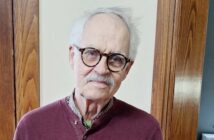
Community Voices: IceHouse colors local Bethlehem arts
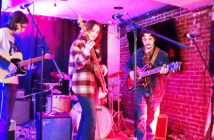
Local musicians find a communal sound in local venues
Comment policy, leave a reply cancel reply.
Save my name, email, and website in this browser for the next time I comment.
Notify me of follow-up comments by email.
Notify me of new posts by email.
- Member Login
- Email Updates

Neil Gaiman
- SAT 7/20 • 8 PM
You can add this event to your Outlook, Google, Yahoo, or iCal calendar by clicking on one of the links below:
- Outlook/iCal
Event Details

Plan Your Visit
You might also like.
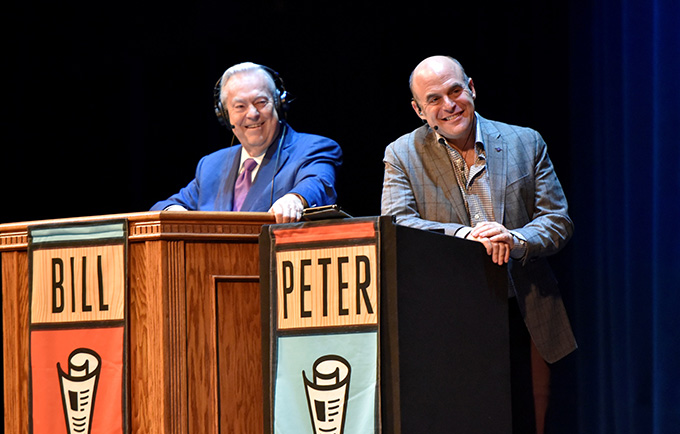
Wait Wait...Don’t Tell Me! from NPR
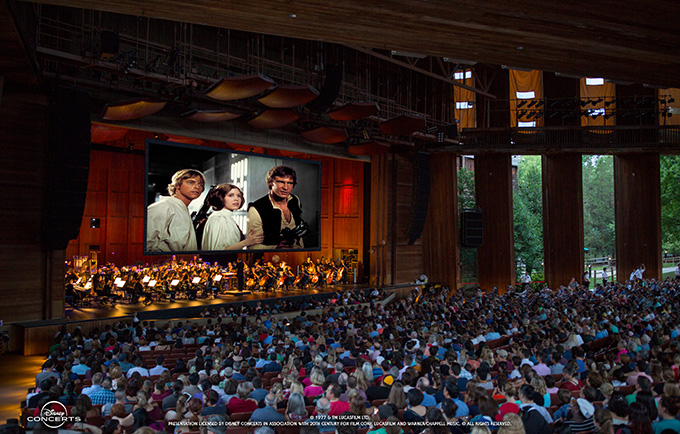
Star Wars: A New Hope in Concert National Symphony Orchestra Emil de Cou, conductor
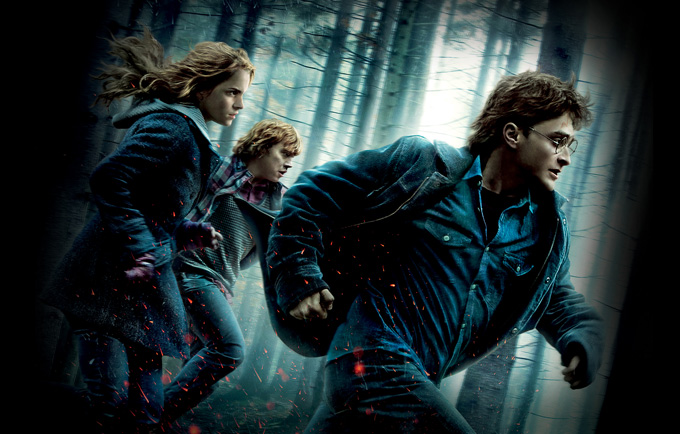
Harry Potter and the Deathly Hallows™ Part 1 in Concert National Symphony Orchestra Constantine Kitsopoulos, conductor
Check out our full calendar of shows.

An initiative of the American Library Association
“I will always be on the side of the libraries”: A Conversation with Neil Gaiman
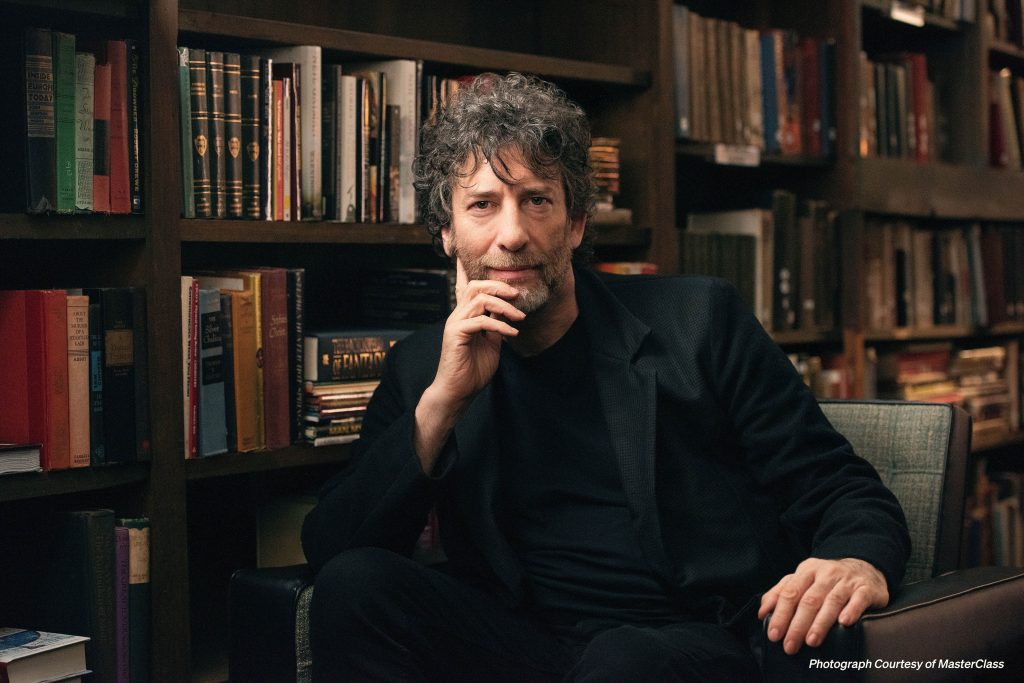
Neil Gaiman wears many hats: novelist, journalist, comic book writer, screenwriter, television producer, musician. And he’s a fierce supporter of libraries. The author of American Gods, Neverwhere, Good Omens: The Nice and Accurate Prophecies of Agnes Nutter, Witch, The Sandman, Coraline, and many more has had a lifelong love affair with reading—he’s even featured on a brand-new Celebrity READ poster from ALA Graphics—and he credits librarians for fostering his curiosity about books and learning at a young age.
Gaiman spoke with I Love Libraries recently about the importance of libraries, comic books, book banning in the U.S., movies, and more.
What drew you to sci-fi and fantasy as a young reader?
I have absolutely no idea. When I was a kid, I loved books. Books of all kinds. I remember there wasn't necessarily a feeling of being drawn to fantasy as there was an absolute love of everything that I had read so far.
You know, you start out reading, and you're reading books about mermaids; you're reading Snow White; you're reading about the Pied Piper of Hamelin and so forth. You read The Wind in the Willows. You read Alice in Wonderland. And you want more of whatever that is, that feeling of wonder, that feeling of escape, that feeling of being able to get away from this world and visit others.
Were comic books a part of that world?
Comic books turned up. I liked my British comic books. They were sweet. But then they started reprinting Marvel comics, and they were reprinting them from the beginning, which was fabulous even though they were in black and white. I was encountering Thor, the X-Men, the Hulk, Spider-Man, all these characters from the beginning which was a lovely way to get to know a universe of characters.
And then when I was about 7, my father—for reasons that I never found out—suddenly had a huge box of Marvel and D.C. comics, a box of American comics. And I was lost. I remember all of them. I remember the covers. Amazing color stories. And I fell in love with superheroes. I just thought they were the best things in the world.
When I got a little bit older, and by a little bit older I mean 10 years old, I got less interested in superheroes and more interested in the creepy stuff. Superheroes felt a little bit predictable to me in the sense that, you know, at the end of the day, it was “somebody hits somebody and the good guy eventually wins.” Whereas I liked creepier stuff because I never really knew who was going to win; I never knew quite what was going to happen next. So I would go to comics like The Phantom Stranger and Swamp Thing and House of Mystery and House of Secrets. They were my happy place.
You've mentioned that it was discovering Alan Moore’s revitalization of Swamp Thing that led you to want to write comic books.
I loved the original Len Wein and Bernie Wrightson’s Swamp Thing. When I was 11 or 12, I thought they were the best comics in the world and I loved going back to them. So, when I saw in 1983 that somebody was writing a Swamp Thing comic, I was very unimpressed. I hadn't read comics for five or six years at that point. I was in Victoria Station [in London], and I picked one up and read it in WHSmith. It was really quite good, but I put it back because I didn't buy comics anymore. I did this for about two or three months, and then gave in and bought my first Alan Moore— The Saga of the Swamp Thing —and just fell. At that point I was an Alan Moore fan. I thought he was the smartest person.
Literally, I'm like, “Okay, I'm a book reviewer. I'm a film reviewer, and what Alan is doing right now in comics—he's as interesting and as deep as anything that anybody is doing in books or on television. And that's so amazing.”
It was huge for me. I wrote to Alan, and when my first book came out, I sent him a copy. And he phoned back, and we became friends. The first time I met him, I said, “Will you show me how to write comics. I want to know; I don't actually understand.”
I recently saw two videos of you on Instagram that I loved. The first featured you at Waxworks Records ecstatically pressing a vinyl album of the soundtrack for the Netflix adaptation The Sandman . And the second was a clip of you backstage at the play adaptation of your book The Wolves and the Walls. Those videos got me thinking about the life of a work after it leaves a writer. Your books have been adapted into many mediums: film, television, theater, and more. Are you ever concerned about your work being in someone else's hands and the final product not being in line with your original vision?
I tend to be Darwinian in that the good things work, and the ones that are really good last. They find their audience, and they last. And, you know, I would rather say yes to somebody who's enthusiastic and seems to have a calling than say no.
With Stardust, that was fun because [director] Matthew Vaughn got to make his film. With Coraline, that was fun, and I got the sense that once it was done, it was like, “Oh, we just made something that will be around forever.” I love the fact that it's now 12, 13, 14 years after Coraline the movie was released, and it just goes on and lives. It has this amazing life as a movie. So I would always much rather say yes to things and see what magic they make or they don't make.
You’re an author of many books that have been challenged and banned throughout the years. What does it feel like to experience that?
On one hand, you feel like it's an honor, and on the other hand, you feel anger and revulsion. And both of those things are true. I am honored to be a banned book whenever it happens, because I look at the history of books that have been banned; the history of who bans them. I will never be on the side of the people who ban the books. I'm on the other side. I will always be on the side of the libraries.
As far as I'm concerned, if you really can't figure out which political party or which politician to vote for, just ask if they're on the side of libraries. Are they voting to fund their libraries? Are they voting to keep them free? Then vote for those guys. They're probably the good guys. And by the same token, the book burners, the book banners, they're probably the bad guys. It's a good way to bet.
But it also makes me tremendously angry. Because for a lot of people, libraries are still the way that they can get books, the way that they can afford books, the way that they can access books. And when you challenge a book, when you take it out of a library, when you do what some people have done.... There was a case a few years ago where some library workers decided that some books were Satanic, I think it was The League of Extraordinary Gentlemen. So they conspired to always keep the books checked out, which was fine, because it didn’t quite get discovered. But when they decided to actually burn the books, then they got far mad. And that kind of thing, it’s just like, somebody would have liked to read that. You don't have to do that. They're not making the world a better place by taking ideas out of it.
Why do you think we're seeing such an increase in book bans and challenges now? What do you think they're afraid of?
I don't actually think they're afraid of anything. I think they feel that it's a way to exert power, and it's a way to exert control, and it's a way to show that they're in charge. The scariest thing is that, in books and movies, all too often the bad guys are the ones going, “Ha ha, I am a bad guy. I have an evil plan.” But all too often when you start digging into history, the real bad guys are the ones who are going on about doing the “right thing.” It's absolutely the right thing to murder six million Jews. It's absolutely the right thing to invade Africa. It's the right thing to do to cut off these people's hands or whatever. And that, unfortunately, is where the most monstrous things happen.
What do you think that we as book lovers, librarians, parents, teachers can do to combat this?
I think the most important thing right now for us and for everybody is to get involved locally. People don't necessarily stand for their library boards; they don't stand for their school boards. It's work, and we're all busy. That means the people who do stand for library boards and who do stand for school boards very often get onto the boards at their local libraries. That can be good when they are people of good will.
I spent this morning being shown around the building that is going to become the new Woodstock (N.Y.) town library. And it's going to become this amazing community hub. I walked out so enthusiastic at the idea of this place that will be the dream of a library. It'll be amazing. I love the fact that the library board is behind it. They're supporting it, and they support their librarians. I'm looking forward to being a part of this.
But I'm very aware that there are a lot of towns where the goal of the people who have been elected to their library board is to close down the library—or at least stop people from getting access to things they don't want them to have access to. That can be knowledge, that can be the idea that the things people do outside of their town can be the right way to do things or at least that there is another way of doing things. It always comes back to think globally but act locally.
You credit librarians with fostering your lifelong love of reading. Do you have a favorite library story, past or present, that you can share?
I get told not to tell this by librarians, because librarians are terrified that people will view them as cheap childcare. But when I was from, I think the age of 7 onwards, my parents would drive me to the local library in the morning [during the summer], which is where I wanted to be during my school hours. And I would just sit there going through the card file. It had an old-fashioned card file. And I would go through the card file looking for words like witches, robots, outer space, ghosts, monsters, giants, magic, anything like that. And I would read everything I could in those categories. And I'd read anything that looked interesting. And after a while, I gave up and just started reading through alphabetically.
By the end, I had read the children's library, and I loved it. And I would have been about 11 or 12 when I went, “Now, I can start on the adult library.” And I went out and tried doing that alphabetically and failed within, like, four books. It was just, “I hate these books.” So I became much pickier when I moved into the adult library.
But I remember the joy of being able to talk to the librarian about things I wanted to read that they did not have. I remember them ordering for me the complete plays of W.S. Gilbert, which I wanted to read. When the copy came in, I got so excited. It was an interlibrary loan. I remember sitting there trying to figure out with the librarian who the authors of The Three Investigators books were, so they could order some more. It was Alfred Hitchcock and the Three Investigators. I was like, “Okay, I need Alfred Hitchcock. Who is the author?!” We can't figure it out. And, you know, I'm a 9-year-old, and this is a grown-up librarian, and we're working together. I think the “working together” is the most important thing.
The library was a space where I could go as a 7-year-old, as an 8-year-old, where I was treated with respect. I was treated as one of the people who was there. I could talk to the librarians. And I did. Most of the time they’d just ignore me—I'd be sitting reading my book, and I was the happiest kid that could be in the corner reading—but when I did interact with them, they interacted with me as a customer, as a patron, as somebody who was entitled to be there, deserved to be there, had every right to be in that space. And I still remember that because nobody did that. That's not a thing that happens when you're 7 years old, but it happened to me.

I wanted a book that I could link everything, from being a kid to now. It was a book that I love wholeheartedly now and loved then. The Wind in the Willows is a masterwork. It's beautifully written. It's beautifully thought out. It contains magic on a level that I find fascinating because—apart from the fact that you have animals who are both animal-sized and somehow human-sized doing things that human beings do—there is nothing fantastical about it. And yet, in the middle of the book, in a chapter called “The Piper at the Gates of Dawn”—which often gets omitted now, which makes me sad—the great god Pan shows up. And Pan is there for the animals as kind of a nature god who's rescued a lost baby otter. If there was ever a chapter in a book that sort of puts you in touch with the luminous, it's that chapter.
I remember my first ever encounter with the story as a 3-year-old kid in Portsmouth, down in Southsea, in Hampshire, England, watching actors wearing costumes—a toad costume, a rat costume, a mole, and a badger costume—and just marveling at the magic of it. And then discovering the book and going, “I'm reading an important book. I'm reading something that I'm learning from.”
I look back at it now and think, “You’re an almost perfect book.” The only place that it feels less than perfect to me now is that there's really only one female character. But she comes in and does one of the most important things that any of the characters do, so that’s alright.
One last question. It's a two-parter: What are you reading now, and what was the last movie you watched?
I'm reading The Curator by Owen King, and I'm loving it. It's a beautiful book. It reminds me a little bit of Winter’s Tale by Mark Helprin. One of those books that straddles fantastic and modernist literature in that it seems to be set in our world, seems to be set maybe 100 years ago. Yet it's in a city that has never existed or a country that has never existed. And it's as magical as it is political and beautifully crafted.
The last movie I watched was on the plane home two days ago. I watched The Lady Eve, the Preston Sturges film. The last movie I saw in a movie theater was Elemental, the Pixar film, which I saw with my son, and we loved it. It's a lovely film about being an immigrant in many ways. And they managed to do that thing that good fantasy does, which is we see ourselves through a mirror reflected at 45 degrees. And we can see ourselves much more clearly for not being right up against it but having a little bit of distance.
Related Posts
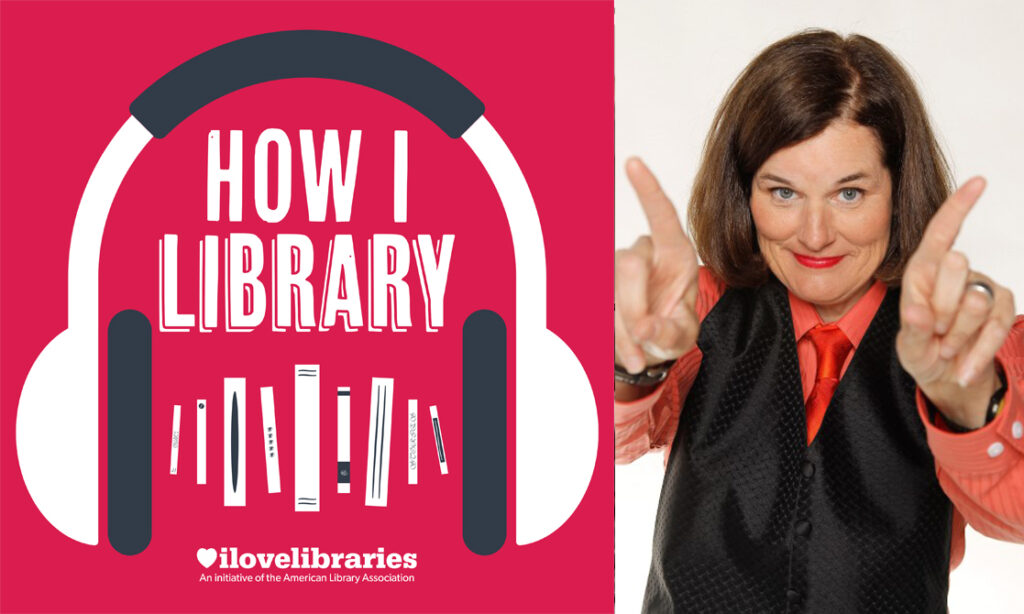
‘How I Library’ Episode Six: Paula Poundstone
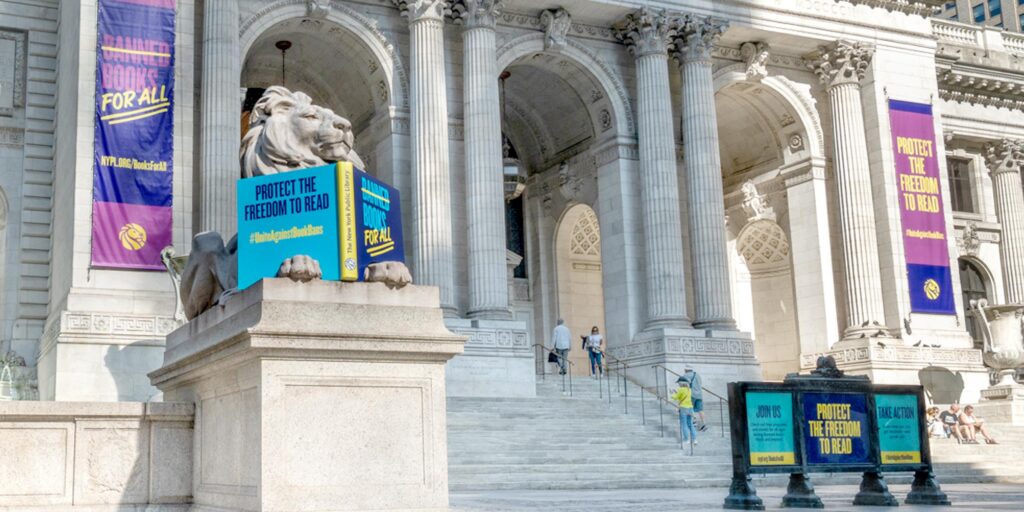
Teen Writers Explore the Importance of the Freedom to Read
Privacy overview.
Where to Start with Neil Gaiman

Headshot: " Author Neil Gaiman " by Kyle Cassidy is licensed under CC BY 3.0
Acclaimed writer Neil Gaiman was born on November 10, 1960 in Hampshire, England. His love of the written word started at a young age when he wrote his first poem at the age of three. His parents would often pat him down before social events to make sure he wasn’t squirreling away any books. It makes sense, then, that his love affair with libraries would have begun at such an early age.
“I wouldn't be who I am without libraries. I was the sort of kid who devoured books, and my happiest times as a boy were when I persuaded my parents to drop me off in the local library on their way to work, and I spent the day there. I discovered that librarians actually want to help you: they taught me about interlibrary loans." — Neil Gaiman discussing his literary beginnings
At age seven, Gaiman was given The Chronicles of Narnia box set where he first learned of the prestigious Carnegie Medal —a British literary award given to an outstanding new book for young readers. When he bought A Wrinkle in Time several years later, he learned about the Newbery Medal , the Carnegie’s US equivalent. Some 40 odd years later, Gaiman would be awarded both medals for The Graveyard Book , a title he had been working on since his mid-20s.
Besides the works of C.S. Lewis and Madeleine L’Engle , Gaiman also grew up reading titles by J.R.R. Tolkien , James Branch Cabell , Edgar Allan Poe , Michael Moorcock , Ursula K. Le Guin , Gene Wolfe , G.K. Chesterton , and Lewis Carroll . The works of these writers and many more had a profound influence on Gaiman and his writing style.
Gaiman started off as a journalist, writing over 700 book and film reviews for various publications. In 1984, while waiting for a train, Gaiman noticed Alan Moore’s Saga of the Swamp Thing Number 25 on a newsstand rack. What he read was a revolutionary approach to comics, reinvigorating his deep love for the art form. 1989 was the start of the cult series: The Sandman , winner of multiple Eisner and Harvey Awards.
In 2013, in celebration of the 175th anniversary of Charles Dickens's classic holiday story, Neil Gaiman performed a reading of A Christmas Carol here at NYPL.
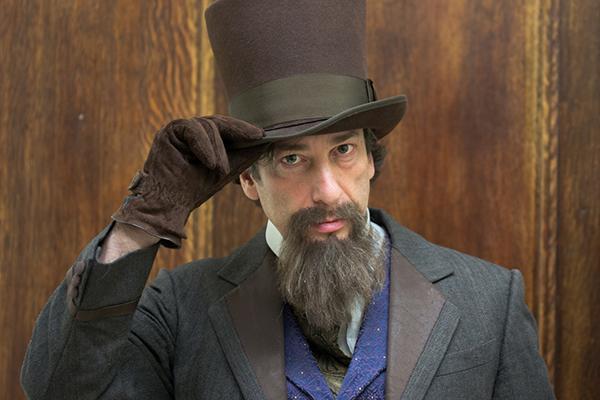
Neil Gaiman dressed as Charles Dickens during a reading of A Christmas Carol
Photo by Jonathan Blanc/NYPL
Gaiman is beyond prolific. He’s written novels, short stories and novellas, film scripts, comics and graphic novels, nonfiction, and pretty much anything else you can think of—including an out-of-print biography of Duran Duran and a poem about a gay Quaker astronomer who confirmed Einstein’s theory of relativity . His transcendent stories have won many accolades, cementing him as one of the top writers of this generation. His ability to write for all ages has only continued his legacy for current and future fans.
For those interested in Gaiman’s bibliography, we’ve put together a reader’s starter guide to all things fantastical.
.css-1t84354{transition-property:var(--nypl-transition-property-common);transition-duration:var(--nypl-transition-duration-fast);transition-timing-function:var(--nypl-transition-easing-ease-out);cursor:pointer;-webkit-text-decoration:underline;text-decoration:underline;outline:2px solid transparent;outline-offset:2px;color:var(--nypl-colors-ui-link-primary);text-decoration-style:dotted;text-decoration-thickness:1px;text-underline-offset:2px;}.css-1t84354:hover,.css-1t84354[data-hover]{-webkit-text-decoration:underline;text-decoration:underline;color:var(--nypl-colors-ui-link-secondary);text-decoration-style:dotted;text-decoration-thickness:1px;}.chakra-ui-dark .css-1t84354:hover:not([data-theme]),.chakra-ui-dark .css-1t84354[data-hover]:not([data-theme]),[data-theme=dark] .css-1t84354:hover:not([data-theme]),[data-theme=dark] .css-1t84354[data-hover]:not([data-theme]),.css-1t84354:hover[data-theme=dark],.css-1t84354[data-hover][data-theme=dark]{color:var(--nypl-colors-dark-ui-link-secondary);}.css-1t84354:focus,.css-1t84354[data-focus]{box-shadow:var(--nypl-shadows-outline);}.chakra-ui-dark .css-1t84354:not([data-theme]),[data-theme=dark] .css-1t84354:not([data-theme]),.css-1t84354[data-theme=dark]{color:var(--nypl-colors-dark-ui-link-primary);}.css-1t84354:visited{color:var(--nypl-colors-ui-link-tertiary);}.chakra-ui-dark .css-1t84354:visited:not([data-theme]),[data-theme=dark] .css-1t84354:visited:not([data-theme]),.css-1t84354:visited[data-theme=dark]{color:var(--nypl-colors-dark-ui-link-tertiary);}.css-1t84354 a:hover,.css-1t84354 a[data-hover]{color:var(--nypl-colors-ui-link-secondary);}.css-1t84354 screenreaderOnly{clip:rect(1px, 1px, 1px, 1px);height:1px;overflow:hidden;position:absolute!important;width:1px;word-wrap:normal;} American Gods
Caught between the Old Gods (Odin, Anansi, Bilquis) and the New (Media, Technology, Globalization) in a battle for America’s soul, Shadow, a young man recently released from prison, embarks on a surreal road trip to decide their fates. The novel was adapted for television in 2017 and had three seasons. A perfect introduction to Gaiman’s oeuvre.
The Sandman
A classic in the comic world, Gaiman reinvents DC Comic’s character The Sandman. The story follows Dream of the Endless, ruler of the dreamworld, through his trials and tribulations. Part horror, part fantasy, the strength of this series comes from its blend of mythology and history. Highly recommended for those wondering where to start in the graphic novel format.
The Ocean at the End of the Lane
A return to his hometown for a funeral brings forth forgotten memories about his childhood and his neighbor, Lettie Hempstock. Magical realism at its best.
With Terry Pratchett
What happens when two witty authors combine forces? A story where the end of the world is nigh, Good and Evil are under preparation, and the Antichrist is missing. Oh, and did I forget to mention that an angel and demon team up and forge a plan to sabotage the Rapture upon deciding it’s “not for them?” Wildly funny and massively entertaining.
In the small town of Wall, Tristran Thorn must find a fallen star to win the hand of his beloved, Victoria Forester. This journey will take him into Fairie, a magical world where things are not always what they seem. A fairie tale for adults.
A Study in Emerald
An ode to Sherlock Holmes and H.P. Lovecraft, this supernatural mystery is a loose retelling of A Study in Scarlet set in the world of the Cthulhu Mythos. Paired with Rafael Albuquerque’s illustration, this short story exemplifies Gaiman’s craftsmanship of the fantasy and sci-fi genres.
For Children
A deliciously creepy book, Coraline travels through a door in her new house to one that is a mirror image...but better. The other parents shower her with love and affection, everything Coraline craves. It seems perfect, until it’s not. One to read on a dark, stormy night, preferably with biscuit and tea.
The Graveyard Book
Nobody Owens is not your average boy. He lives in a graveyard and cared for by those who prowl the cemetery - ghosts, vampires, and other improbable creatures alike. But how does a boy truly live amongst the living and the dead? Rich in detail, this dark tale takes adventurers on a wild journey of the heart.
Have trouble reading standard print? Many of these titles are available in formats for patrons with print disabilities.
- What's Hot:
- Summer Sizzle Win $500
- Making a Difference
- CYY Newsletter
- Station Merch

Maine Gets a Visit From Popular Author Neil Gaiman, Creator of ‘The Sandman’
- Share on Facebook
- Share on Twitter
As summer winds and the tourism season slows in Maine , the celebrity sightings throughout Vacationland are also likely to wane. Maine was popular again this year amongst actors and sports stars, with visits from people like Brett Favre to a-list actor Steve Carell . Another big name in the world of comic books visited the Pine Tree State recently, as author Neil Gaiman shared some details on Facebook about his trip to Maine .
Gaiman stated that he was visiting Maine to attend a wedding, and decided to make an adventure out of it by visiting a few other places in the state including Nervous Nellie's Jams and Jellies , an eclectic little shop on Deer Isle, Maine. That may have been Gaiman's way of tipping his hand to fans as to what part of Maine he was visiting.
Gaiman is no stranger to New England, however. While most of his time seems to be spent in Wisconsin, Gaiman also has had a residence in Cambridge, Massachusetts, since 2013. Perhaps Gaiman has used his time in New England to craft some of his novels and comics, including the ever-popular 'The Sandman', which is now a viral hit on Netflix.
Before 'The Sandman' found fame on the streaming giant, it was a critically-acclaimed comic book series that followed the trials and tribulations of Morpheus aka Dream, who escapes a century-long imprisonment and embarks on a journey to restore his kingdom. Gaiman's work on the comic earned him a spot on the New York Times bestseller list, a rarity for comic books.
LOOK: See how much gasoline cost the year you started driving
18 celebrities who have owned homes in maine, more from 94.3 wcyy.
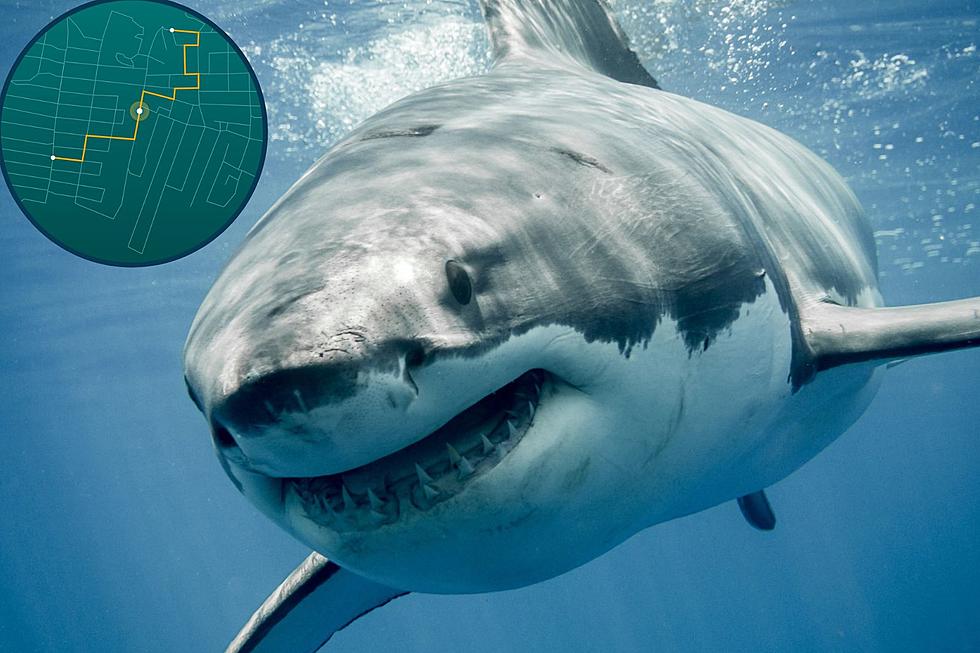

The Blog of Author Tim Ferriss
Tim Ferriss's 4-Hour Workweek and Lifestyle Design Blog. Tim is an author of 5 #1 NYT/WSJ bestsellers, investor (FB, Uber, Twitter, 50+ more), and host of The Tim Ferriss Show podcast (400M+ downloads)
Neil Gaiman — The Interview I've Waited 20 Years to Do (#366)
Share this:, join 1.5m+ subscribers and receive exclusive tools, tips, and resources sent directly by tim:.

“The biggest problem we run into is going, ‘This is who I am, this is what I’m like, this is how I function,’ while failing to notice that you don’t do that anymore.” — Neil Gaiman
Neil Gaiman ( @neilhimself ) is the bestselling author and creator of books, graphic novels, short stories, film and television for all ages, including Neverwhere , Coraline , The Graveyard Book , The Ocean at the End of the Lane , The View from the Cheap Seats and the Sandman series of graphic novels . His fiction has received Newbery and Carnegie Medals, and Hugo, Nebula, World Fantasy, Bram Stoker, and Will Eisner Awards, among many other awards and honors.
His novelistic retelling of Norse myths, Norse Mythology , has been a phenomenon, and an international bestseller, and won Gaiman his ninth Audie Award (for Best Narration by the Author).
Recently Gaiman wrote all six episodes of, and has been the full-time showrunner, for the forthcoming BBC/Amazon Prime mini-series adaptation of Good Omens , based on the beloved 1990 book he co-wrote with Terry Pratchett.
Many of Gaiman’s books and comics have been adapted for film and television including Stardust (starring Robert De Niro and Michelle Pfeiffer), Coraline (an Academy Award nominee and the BAFTA winner for Best Animated Film), and How to Talk to Girls at Parties , a movie based on Gaiman’s short story. The television series Lucifer is based on characters created by Gaiman in Sandman . His 2001 novel, American Gods , is a critically acclaimed, Emmy-nominated TV series, now entering its second season .
In 2017, Neil Gaiman became a Goodwill Ambassador for UNHCR , the UN Refugee Agency. Originally from England, he lives in the United States, where he is Professor in the Arts at Bard College.
Listen to the episode on Apple Podcasts , Spotify , Stitcher , Overcast , Castbox , or on your favorite podcast platform . You can watch the interview on YouTube here . You can find the transcript of this episode here . Transcripts of all episodes can be found here .
Want to hear an episode with another world-building dreamer? Listen to my conversation with filmmaker Darren Aronofsky in which we discuss nomadic writing, how to navigate tough conversations over creativity and control, dealing with critics, and much more.
SELECTED LINKS FROM THE EPISODE
- Connect with Neil Gaiman :
Website | Twitter | Instagram | Facebook
- Tribe of Mentors: Short Life Advice from the Best in the World by Tim Ferriss
- Roger Dean: How I Designed the Yes Classic Close to the Edge by Sid Smith, Louder
- Views by Roger Dean
- The Lord of the Rings by J.R.R. Tolkien
- The Irregular Lives of Ian Fleming and Roald Dahl by 009, Artistic License Renewed
- Lamb to the Slaughter by Roald Dahl
- Parson’s Pleasure by Roald Dahl, Esquire
- Neverwhere by Neil Gaiman
- Marriott World Trade Center
- Neil Gaiman’s Writing Shed , The Well-Appointed Desk
- This Is What A Handwritten Novel By Neil Gaiman Looks Like by Hayley Campbell, BuzzFeed
- Stardust by Neil Gaiman
- American Gods by Neil Gaiman
- Moleskine Notebooks
- Leuchtturm Notebooks (and on Twitter: @ leuchtturm1917 )
- Legatoria Rivoaltus , Venice
- The Graveyard Book by Neil Gaiman
- The Fountain Pen Hospital
- Lamy Safari Fountain Pen
- Namiki-Pilot Falcon Collection Fountain Pen
- Visconti Fountain Pens
- The Pilot 823 “Workhorse”
- The Ocean at the End of the Lane by Neil Gaiman
- Neil Gaiman Ices His Hand via Imgur
- Neil Gaiman: ‘The Book I Wish I’d Never Written’ by Rebecca Hawkes, The Telegraph
- Comic Book Legal Defense Fund
- The Addams Family
- The 13 Clocks by James Thurber
- Groundhog Day
- Plant Engineering
- The Power of the Dog. Cabal (2003-2013) by Neil Gaiman
- The Jungle Book by Rudyard Kipling
- Johnny and the Dead (The Johnny Maxwell Trilogy) by Terry Pratchett
- Anansi Boys by Neil Gaiman
- A Beginner’s Guide to Terry Pratchett’s Discworld by David G. Lloyd, The Conversation
- The Colour of Magic by Terry Pratchett
- Bertorelli’s Italian Restaurant , Yelp
- The Necrotelicomnicon , The Discworld & Terry Pratchett Wiki
- Don’t Panic: Douglas Adams & The Hitchhiker’s Guide to the Galaxy by Neil Gaiman
- The Jew of Malta by Christopher Marlowe
- The Sandman: A Beginner’s Guide by Scott Meslow, GQ
- The Books of Magic by Neil Gaiman, John Bolton, Scott Hampton, Charles Vess and Paul Johnson
- Good Omens: The Nice and Accurate Prophecies of Agnes Nutter, Witch by Neil Gaiman and Terry Pratchett
- The Teaser and Official Trailers for Good Omens with Michael Sheen and David Tennant
- Terry Pratchett: Living with Alzheimer’s
- Terry Pratchett Defends Choosing to Die Documentary from Critics by Haroon Siddique, The Guardian
- Good Omens’ Garden of Earthly Delights Descends Upon SXSW 2019 , Austin American-Statesman
- How long has this interview been in the making? [09:37]
- An early interview failure that Neil resolved to never repeat. [10:47]
- On separating home life from work life and the writing habits of Maya Angelou and Ian Fleming. [15:55]
- Neil’s biggest rule for writing. [20:16]
- Neil’s process for writing first drafts. [23:35]
- What Neil aims to accomplish with his second drafts. [25:49]
- Something Neil noticed when he first started writing and editing with the use of computers. [26:28]
- What notebooks does Neil prefer for writing first drafts? [29:13]
- Fountain pens Neil has known and loved. [35:21]
- How many book signings does it take to get to the bottom of a Pilot 823’s structural capacity? How about Neil’s signing hand? How many such pens given in sacrifice by Neil’s three-year-old will appease his house gods? [39:39]
- Neil’s journey from manual typewriter to electric typewriter to computer to notebook, and the power of trivializing weighty endeavors — whether they’re writing novels or going for gold medals. [41:49]
- How Coraline went from being an unpublishable labor of love for Neil’s children to an award-winning novella. [47:48]
- Does Neil tend to work on multiple projects at once? [53:22]
- Why does Neil take particular delight in writing introductions to other people’s work? [55:24]
- At what time of day does Neil prefer to work, and has this changed over the years? [56:50]
- Advice to aspiring novelists about finding a routine: The more you can be like Phil Connors in Groundhog Day , the better. [59:35]
- The importance of understanding that just because we do something one way today doesn’t mean we’ll be doing it that way tomorrow. [1:01:28]
- How a touching post on Neil’s blog (which I recommend everyone read) inspired me to adopt my own dog, Molly. [1:03:16]
- What’s the genesis story of The Graveyard Book? [1:04:10]
- Neil makes the case for giving the ensemble version of The Graveyard Book a listen. [1:15:29]
- Who was Terry Pratchett, and how did he and Neil strike up a friendship? [1:16:24]
- On working with Douglas Adams and the germ of the idea that became Neil and Terry’s collaboration, Good Omens . [1:20:12]
- Neil shares his preposterous writing schedule from simultaneously working on Good Omens, Sandman, and The Books of Magic — something only someone very insane (or very young) could possibly handle. [1:23:08]
- Why, after so many misfires trying to get Good Omens on the screen, we’ll finally see an uncompromising television adaptation soon. [1:24:30]
- Where to find out more about Good Omens — the book and the series. [1:30:58]
- What does Neil feel he learned most from his “apprenticeship” with Terry? [1:32:40]
- How did Terry approach his own mortality when he learned he had Alzheimer’s disease? [1:34:45]
- Before he passed away, Terry opened up a controversial dialogue around the right to die for people with terminal diseases like Alzheimer’s. What is Neil’s view? [1:38:14]
- What would Terry think of the Good Omens series and its related fanfare? How might things have gone differently if he’d been directly involved in production? [1:39:50]
- Time flies when you’re interviewing Neil Gaiman. (For the record, I hope to fly again sooner than later.) [1:45:09]
- Parting thoughts. [1:46:03]
PEOPLE MENTIONED
- Michael Moorcock
- Dave Dickson
- Maya Angelou
- Ian Fleming
- John McPhee
- Charles Dickens
- Shaun White
- Holly Gaiman
- Maddy Gaiman
- Jennifer Hershey
- Shadow Moon
- James Thurber
- David Gaiman
- Michael Gaiman
- Rudyard Kipling
- Terry Pratchett
- Lenny Henry
- Derek Jacobi
- Miriam Margolyes
- Reece Shearsmith
- Douglas Adams
- Christopher Marlowe
- Michelangelo
- Terry Gilliam
- Agnes Nutter
- Hugh Jackman
- George R.R. Martin
- Michael Sheen
- David Tennant
The Tim Ferriss Show is one of the most popular podcasts in the world with more than one billion downloads. It has been selected for "Best of Apple Podcasts" three times, it is often the #1 interview podcast across all of Apple Podcasts, and it's been ranked #1 out of 400,000+ podcasts on many occasions. To listen to any of the past episodes for free, check out this page .
Comment Rules: Remember what Fonzie was like? Cool. That’s how we’re gonna be — cool. Critical is fine, but if you’re rude, we’ll delete your stuff. Please do not put your URL in the comment text and please use your PERSONAL name or initials and not your business name , as the latter comes off like spam. Have fun and thanks for adding to the conversation! (Thanks to Brian Oberkirch for the inspiration.)
I want to first say I’m not one to leave comments ever, but I felt compelled to do so because I’m a big fan of yours and a huge fan of Neil’s, and when I saw this episode of the podcast this morning as I was getting ready to walk my dog, I was so excited! The episode was incredible. I’m such a notebook and pen nerd so I loved that part of the interview (and will likely be perusing fountain pens shortly instead of being productive). Although I read Good Omens years ago, after listening to this I just bought it again on Audible and am looking forward to the new series coming out. Listening to Neil talk about his relationship with Terry was so inspiring and I honestly had that odd combination of huge smile and a bit of tearing up in my eyes when the interview ended. So, so good. I just wanted to say thank you for the interview and congrats on checking off that bucket list interview. Cheers.
Two of my favorite people for 90 minutes? Wow.
Anyone who is familiar with Neil Gaiman will love this podcast. As a newbie podcaster, I don’t feel as neurotic anymore. LOL! Neil’s openness in sharing his writing advice and process inspired me in many ways, but his relationship with Terry Pratchett touched my soul. I really enjoyed this interview!
Tim finds his white whale!
I’ve waited so long to hear your interview him. You introduced me to his work and it pushed me in the right direction when starting my fiction writing career. Incredible questions, even better answers. Will have to visit the Fountain Pen Hospital next time I’m in NYC. (Fellow Strong G’Islander).
Thanks Tim!
Another great show. Thanks Tim Ferriss and Neil Gaiman for your comments, insight and just good conversation. Every time I take a listen, I get to learn, think and explore some nook and cranny in my creative mind.
I really like how Neil Gaiman emphasizes the quality of the creative experience with his talk about fountain pens and paper quality, etc. I think too often it’s tempting to “rough it,” and we really cheat ourselves when we do that.
I enjoyed every bit of this interview, and am so glad you were able to interview him. The entire interview was excellent. I’ve been a fan of Neil’s since the Sandman comics too. I just love his voice and his gentle demeanor. I really appreciate the excellent advice he gave for writers. Thanks, Tim!
Anybody find the exact notebook from Venice Neil mentioned?
Not sure exactly which one, but this is the brand and many of these look interesting…
https://www.leuchtturm1917.us/notebooks/
[Moderator: link also provided in Selected Links from the Episode, above.]
I know this is probably a FAQ but do you do transcripts of these interviews? I realise I’d really like to read this on a page.
Thank you. Transcripts are typically published within 10 days of the podcast and may be found by clicking “The Tim Ferriss Show Transcripts” under “Topics.” Transcripts for all shows may be found at https://tim.blog/2018/09/20/all-transcripts-from-the-tim-ferriss-show/ .
Really enjoyed the Episode and the last 365 episodes before that. 🙂
I would ike to suggest a new potential guest for an episode, I dont know if this is the right place to do that but I’ll do it anyway.
The guest is: Keanu Reeves
I have just seen how extensively he prepares for his roles (specially John Wick) and think that it might be interesting to hear about his tactics in this.
Anyway, in the case you read this Tim, keep up the good work!!
The podcast and books are great!!
Would love to hear Keanu Reeves!!
oh and I knew Terry P a little bit and that’s a REALLY good impression of him that Neil does. Brought a little tear to my eye. 🙂 x
Hi Tim, I know that maybe this is not the place to ask this, but isn’t the 4 hour chef available in Kindle format anymore? I am trying to buy it on Amazon, but they have available only the physical versions.
This was my treat for the day. I tackled all the don’t-want-to-do-stuff with the promise that listening to this interview would be my reward for getting all that done. And indeed it was. THANK YOU, Tim. You are interviewer extraordinaire. I’ve always loved how you go deep for the details with your guests and don’t just keep moving through questions for the sake of ticking off the boxes. What an absolute pleasure it was watching the youtube version of this interview, listening to Neil’s thoughtful and beautifully articulated answers to your questions, and seeing just how he thinks and creates his magic on the page. And yes.. (!) I am going to ask for a lovely fountain pen for my birthday this June. 🙂
“I was living in a very tall house.” Holy molly, amazing words.
Tim, if you try a fountain pen, here is the secret. Don’t press so hard on the pen to paper. Just brush it over the paper until the ink flows smoothly. We Americans are used to ball point pens than have to be ground into the page.
I use one for morning pages. Because you don’t push hard, your hand won’t tire out even after hundreds of words.
Tim this was an outstanding, insightful, humorous and also touching interview. Neil Gaiman is an outstanding author and the way you two went back and forth about his writing process was pure gold. Can’t wait to explore the show notes and read more of his work. Cheers 🥂
Not Leichturm but Leuchturm which is a lighthouse in German (literally light tower). Interestingly, Neil started out saying Leuchturm then switched to Leichturm – the power of suggestion! Had to check it out then.
Thanks for the fascinating interview.
THANK YOU, TIM.
Confessions: I’ve listened to almost every podcast, and I’ve never said thank you to you. I think it all the time, but that’s not loud enough and I’m sorry. I knew this one was going to be special. I started listening on a beautiful walk around a bay, but I had to finish in my bathroom because I needed to color my hair. I got the medium brown in, but then your 90 minutes were up. I teared up. It wasn’t the chemicals. It was the conversation.
My favorite parts/takeaways: when Neil’s daughter Maddy asked him, “what happens next?” (making Graveyard Book story), and when he talked about allowing for accidents and randomness and what happens when things grow (Good Omens).
My hair is now pitch black, but it’s worth it. Thank you for architecting and gardening, Tim and Neil.
Tim, thank you x 366 x extra for the episodes I’ve listened to more than once + 5 big books worth of thanks + interest on the overdue thanks, and since I’m getting it all out before I wash my hair, thank you to Derek Sivers for his generosity and guidance and for recommending the 4-Hour Workweek in the first place. Without Derek’s introduction, my hair would not be going goth right now and the mind it covers would not have been opened to a world of great conversation and learning.
Far be it from me to contradict Neil Gaiman, especially when it comes to notebook and pen recommendations, but if you are new to fountain pens the very best way to start (IMO, obviously) is with the medium-nib Pilot Metropolitan pen, which writes beautifully on the Rhodia Webnotebook. It’s a beautiful pen and the Rhodia paper is a tactile joy to write on with it. The paper quality is on par with Leuchturm1917 (superior, imo), and the Moroccan leather-bound cover is soft to the touch. [Moderator: links removed.]
Check out David Goggins and his book “Can’t Hurt Me”, Navy Seal, Ultramarathoner, 24 Hour Pull-Up record Holder. Excellent read, I had to search “Tools of Titans” in Kindle to see if you already interviewed him.
I just want to thank you for doing that interview. It was a privilege to listen to it.
The Graveyard Book (audio) is one of my favourites as well. I remember going for a camping trip with Mum and convincing her to listen to it with me (I knew she would love it!). The tents would be set up, dinner cooked, and to the sounds of wild life and a running creek, we would lay down on a picnic rug and listen to the next couple of chapters. <3
I really enjoyed this interview, it was inspiring and soul touching, so much variety covered, so much to explore and delve into, so many things learned and advice to take on board. The parts I especially loved:
*making a decision is work – don't just write and write and fill up your words with gas.
*choose to do nothing, or write.
*Terry's willingness to go forward, not knowing what happens next.
Thank you both =)
This is a wonderful way to listen to audiobooks! Loved the imagery. Think this will be Hannah and my Easter plans! Thanks for the idea!
This is up there with the Debbie Millman interview. Great job Tim.
Sorry to ask but where is the item list that Neil mentioned; fountain pens, types of notebooks, etc. I’ve looked and cant locate.
Sorry newbie
Please see the heading “Selected Links from the Episode” above.
Does anyone have the link to the Ian Fleming article he was talking about where he wrote the bond books in a hotel room?
I don’t normally comment on anything, but this was fantastic. So good!
I was a very long time fan of Neil Gaiman… way back in the Sandman comic days and then growing up into the novels. Somewhere along the way, I discovered Tim Ferriss and became a fan of his as well… funny how people like similar things and admire the same people.
Hey Tim I just watched the Free Solo movie. I think Alex Honnolds risk system would be a great interview. Cheers!
Thank you. Tim’s interview with Alex Honnold may be found here: https://tim.blog/2016/05/17/alex-honnold/ .
Hey Tim- Trying to reply to your 5-Bullet Friday and it brought me hear. Just watched your video on the three drinks your were enjoying (2016). 1) Where can I find the Hitorimusume Sake? And 2) Can I get an update on what drinks you are enjoying right now?! Thanks!
Neil Gaiman, wow! I got sooo much out of this. So interesting to hear his journey and all the twists along the way. ~ H
Hannah and I loved this interview as we’re both HUGE Neil Gaiman fans! First time I ever came across him was the ensemble BBC Audio version of his Neverwhere book and been hooked ever since!
Can’t wait for the Good Omens series! The parts he shared about Terry Pratchett were really special.
Thanks Tim for your epic interviews and this super cool website. [Moderator: additional text removed (but with appreciation for the content).]
I must keep practicing my writing, or else.
https://www.latimes.com/business/hollywood/la-fi-ct-machine-learning-hollywood-20190411-story.html
“If you’ve got a computer, adding stuff [words] is not work, CHOOSING is work”.
I loved every second of this interview. So many writing advice gems plus extensive talk about fountain pens. What more could you want in life?
A favorite of all time, the measure and thoughtfulness in Neil’s answers and articulation. I am still a fountain pen user, we’re out there! And, now the Fountain Pen hospital is on my New York list!
I really enjoyed this conversation. Neil has a voice and pacing that is so easy to listen to. I read Coraline to my kids after this podcast and had to edit some scary parts down for them. But I did find myself trying to channel Neil while I read outloud.
I also love his writing strategy, you are allowed to sit and do nothing or you can write. I will apply that to my work. You can sit and do nothing or you can design.
Fantastic conversation with Mr Gaiman. I listened to this while digging up my backyard to build a patio (a very systematic endeavor with just a spade shovel) and somehow it was the perfect combination of things.
“I go to a place and I can write or I can do nothing.”
What a simple yet ingenious rule to inspire one to write. Some days it is just hard to pick up the pen. I recently did something similar, locking myself away in a barn loft without WiFi or cell service and went full FBR on a text. It truly works – writing is better than nothing!
would i, one day, bod-like, meet the good neil, at the hospital? i’m a small graveyard kinda guy. but i believe in resurrection. and i wish the best ‘o days to ya.
I loved this, and it’s changed how I structure my writing practice. I can’t thank either of you enough.
Thank you for this one, Tim. My favourite episode ever, I really enjoyed it!
I was just wondering, since you live in Austin, could you please, please, invite your fellow Austinite Adriene Mishler (Yoga with Adriene) for an interview? She’s one of the most inspirational people I know.
The way to bring out the creativity and bring it to the maximum carattarizza all this interview, sometimes you think that everything is simple and maybe everything will be fine but in reality in reality you have to have courage! Great Tim advocate of creativity. [Moderator: link removed.]
I loved Neil’s discussion of his writing protocol and, as I am a pen and notebook addict, particularly the details regarding his pens and notebooks. Years ago I tried the Lamy Safari years ago that Neil mentioned. I was underwhelmed. I didn’t start liking fountain pens until I tried the Kaweco Sport. Tim, try that one. It’s cheap so you can try it and won’t feel guilty if you never use it again. Plus you can skip the trip to NYC’s Fountain Pen Hospital!
Neil Gaiman on Why We Read and What Books Do for the Human Experience
By maria popova.

The question of why we read and what books actually do for us is as old as the written word itself, and as attractive. Galileo saw reading as a way of having superhuman powers . For Kafka, books were “the axe for the frozen sea within us” ; Carl Sagan held them as “proof that humans are capable of working magic” ; James Baldwin found in them a way to change one’s destiny ; for Polish Nobel laureate Wisława Szymborska, they stood as our ultimate frontier of freedom .
But one of the finest, most dimensional inquiries into the significance of books and the role of reading in human life comes from Neil Gaiman in a beautiful piece titled “Why Our Future Depends on Libraries, Reading and Daydreaming.”
Originally delivered as a lecture for The Reading Agency , an English charity devoted to giving kids from all backgrounds an equal chance at the good life by fostering an early love of reading, the speech was later included in The View from the Cheap Seats: Selected Nonfiction ( public library ) — the terrific compendium that gave us Gaiman on the power of cautionary questions .

Gaiman considers how the act of reading changes us, “what it’s good for”:
Once in New York, I listened to a talk about the building of private prisons — a huge growth industry in America. The prison industry needs to plan its future growth — how many cells are they going to need? How many prisoners are there going to be, fifteen years from now? And they found they could predict it very easily, using a pretty simple algorithm, based about asking what percentage of ten- and eleven-year-olds couldn’t read. And certainly couldn’t read for pleasure.

Echoing Madeleine L’Engle’s spirited 1983 lecture on creativity, censorship, and the duty of children’s books , Gaiman considers how otherwise well-intentioned adults might thwart the seed of that life-enlarging and sometimes even life-saving passion for reading. In a passage of particular urgency for parents and educators, he writes:
I don’t think there is such a thing as a bad book for children. Every now and again it becomes fashionable among some adults to point at a subset of children’s books, a genre, perhaps, or an author, and to declare them bad books, books that children should be stopped from reading. I’ve seen it happen over and over; Enid Blyton was declared a bad author, so was R. L. Stine, so were dozens of others. Comics have been decried as fostering illiteracy. It’s tosh. It’s snobbery and it’s foolishness. There are no bad authors for children, that children like and want to read and seek out, because every child is different. They can find the stories they need to, and they bring themselves to stories. A hackneyed, worn-out idea isn’t hackneyed and worn out to someone encountering it for the first time. You don’t discourage children from reading because you feel they are reading the wrong thing. Fiction you do not like is the gateway drug to other books you may prefer them to read. And not everyone has the same taste as you. Well-meaning adults can easily destroy a child’s love of reading: stop them reading what they enjoy, or give them worthy-but-dull books that you like, the twenty- first-century equivalents of Victorian “improving” literature. You’ll wind up with a generation convinced that reading is uncool and, worse, unpleasant.
Gaiman then turns to the second key function of literature — its unparalleled ability to foster empathy. In a sentiment that calls to mind Rebecca Solnit’s inspired assertion that “a book is a heart that beats in the chest of another,” he writes:
When you watch TV or see a film, you are looking at things happening to other people. Prose fiction is something you build up from twenty-six letters and a handful of punctuation marks, and you, and you alone, using your imagination, create a world, and people it and look out through other eyes. You get to feel things, visit places and worlds you would never otherwise know. You learn that everyone else out there is a me, as well. You’re being someone else, and when you return to your own world, you’re going to be slightly changed. Empathy is a tool for building people into groups, for allowing us to function as more than self-obsessed individuals.

In a sentiment reminiscent of Ursula K. Le Guin’s electrifying case for how imaginative storytelling expands our scope of the possible , Gaiman points to a third essential function of fiction in human life — its ability to introduce us to different versions of the world by envisioning alternate possibilities for the way things are:
Fiction can show you a different world. It can take you somewhere you’ve never been. Once you’ve visited other worlds, like those who ate fairy fruit, you can never be entirely content with the world that you grew up in. And discontent is a good thing: people can modify and improve their worlds, leave them better, leave them different, if they’re discontented.
But perhaps the surest way to foil a budding love of reading is to cut off access to books altogether, and there is no greater hedge against that hazard than the library — that sacred place Thoreau once extolled as a glorious “wilderness of books.” ( “When a library is open, no matter its size or shape,” Bill Moyers wrote in his foreword to a recent photographic love letter to libraries , “democracy is open, too.” ) Gaiman recounts the formative role of the library in his own life:
I was lucky. I had an excellent local library growing up. I had the kind of parents who could be persuaded to drop me off in the library on their way to work in my summer holidays, and the kind of librarians who did not mind a small, unaccompanied boy heading back into the children’s library every morning and working his way through the card catalogue, looking for books with ghosts or magic or rockets in them, looking for vampires or detectives or witches or wonders. And when I had finished reading the children’s library I began on the adult books.
Gaiman was fortunate that the librarians tasked with nurturing his love of reading were the kind who inspire poems and not the kind who tried to bar pioneering astronaut Ronald McNair from his childhood library . With an affectionate eye to the librarians of his youth, Gaiman reflects:
They were good librarians. They liked books and they liked the books being read. They taught me how to order books from other libraries on interlibrary loans. They had no snobbery about anything I read. They just seemed to like that there was this wide-eyed little boy who loved to read, and they would talk to me about the books I was reading, they would find me other books in a series, they would help. They treated me as another reader — nothing less, nothing more — which meant they treated me with respect. I was not used to being treated with respect as an eight-year-old. Libraries are about Freedom. Freedom to read, freedom of ideas, freedom of communication. They are about education (which is not a process that finishes the day we leave school or university), about entertainment, about making safe spaces, and about access to information.

Writing nearly a century after Hermann Hesse’s magnificent manifesto for why the book will never lose its magic no matter how technology evolves, Gaiman borrows a prefect metaphor to substantiate his belief that books will endure in and perhaps past the age of screens:
As Douglas Adams once pointed out to me, over twenty years before the Kindle showed up, a physical book is like a shark. Sharks are old: there were sharks in the ocean before the dinosaurs. And the reason there are still sharks around is that sharks are better at being sharks than anything else is. Physical books are tough, hard to destroy, bath resistant, solar operated, feel good in your hand: they are good at being books, and there will always be a place for them.
But Gaiman takes care not to confuse the medium with the message — it is reading that counts, and its rewards are medium-agnostic. He writes:
We need libraries. We need books. We need literate citizens. I do not care — I do not believe it matters — whether these books are paper or digital, whether you are reading on a scroll or scrolling on a screen. The content is the important thing. But a book is also the content, and that’s important. Books are the way that we communicate with the dead. The way that we learn lessons from those who are no longer with us, that humanity has built on itself, progressed, made knowledge incremental rather than something that has to be relearned, over and over. There are tales that are older than most countries, tales that have long outlasted the cultures and the buildings in which they were first told.
These tales have survived on the shoulders of people who have done their part to transmit them forward — something Gaiman examined in his excellent lecture on how stories last . He considers what it would take to uphold our own responsibilities to the future — as readers, as writers, as citizens, and as members of the storytelling species:
I believe we have an obligation to read for pleasure, in private and in public places. If we read for pleasure, if others see us reading, then we learn, we exercise our imaginations. We show others that reading is a good thing. We have an obligation to support libraries. To use libraries, to encourage others to use libraries, to protest the closure of libraries. If you do not value libraries then you do not value information or culture or wisdom. You are silencing the voices of the past and you are damaging the future. We have an obligation to read aloud to our children. To read them things they enjoy. To read to them stories we are already tired of. To do the voices, to make it interesting, and not to stop reading to them just because they learn to read to themselves. We have an obligation to use reading-aloud time as bonding time, as time when no phones are being checked, when the distractions of the world are put aside. We have an obligation to use the language. To push ourselves: to find out what words mean and how to deploy them, to communicate clearly, to say what we mean. We must not attempt to freeze language, or to pretend it is a dead thing that must be revered, but we should use it as a living thing, that flows, that borrows words, that allows meanings and pronunciations to change with time. We writers — and especially writers for children, but all writers — have an obligation to our readers: it’s the obligation to write true things, especially important when we are creating tales of people who do not exist in places that never were — to understand that truth is not in what happens but in what it tells us about who we are. Fiction is the lie that tells the truth, after all. We have an obligation not to bore our readers, but to make them need to turn the pages. One of the best cures for a reluctant reader, after all, is a tale they cannot stop themselves from reading. And while we must tell our readers true things and give them weapons and give them armor and pass on whatever wisdom we have gleaned from our short stay on this green world, we have an obligation not to preach, not to lecture, not to force predigested morals and messages down our readers’ throats like adult birds feeding their babies pre-masticated maggots; and we have an obligation never, ever, under any circumstances, to write anything for children to read that we would not want to read ourselves. We have an obligation to understand and to acknowledge that as writers for children we are doing important work, because if we mess it up and write dull books that turn children away from reading and from books, we’ve lessened our own future and diminished theirs.
Writing more than two centuries after William Blake’s searing defense of the imagination , Gaiman points to the same supreme human faculty as our greatest obligation:
We all — adults and children, writers and readers — have an obligation to daydream. We have an obligation to imagine. It is easy to pretend that nobody can change anything, that we are in a world in which society is huge and the individual is less than nothing: an atom in a wall, a grain of rice in a rice field. But the truth is, individuals change their world over and over, individuals make the future, and they do it by imagining that things can be different. […] Just look around this room… Everything you can see, including the walls, was, at some point, imagined. Someone decided it might be easier to sit on a chair than on the ground and imagined the chair. Someone had to imagine a way that I could talk to you in London right now without us all getting rained on. This room and the things in it, and all the other things in this building, in this city, exist because, over and over and over, people imagined things. They daydreamed, they pondered, they made things that didn’t quite work, they described things that didn’t yet exist to people who laughed at them. And then, in time, they succeeded. Political movements, personal movements, all begin with people imagining another way of existing.
Gaiman’s final obligation is of especially resonant relevance today:
We have an obligation to tell our politicians what we want, to vote against politicians of whatever party who do not understand the value of reading in creating worthwhile citizens, who do not want to act to preserve and protect knowledge and encourage literacy. This is not a matter of party politics. This is a matter of common humanity.
Complement this particular portion of the wholly magnificent The View from the Cheap Seats with Hermann Hesse on the three types of readers , Ursula K. Le Guin on the sacredness of public libraries , and Virginia Woolf on how to read a book , then revisit Gaiman on creative courage , his eight rules of writing , and his philosophical dream, animated .
— Published August 3, 2016 — https://www.themarginalian.org/2016/08/03/neil-gaiman-view-from-the-cheap-seats-reading/ —

www.themarginalian.org

PRINT ARTICLE
Email article, filed under, books culture neil gaiman politics writing, view full site.
The Marginalian participates in the Bookshop.org and Amazon.com affiliate programs, designed to provide a means for sites to earn commissions by linking to books. In more human terms, this means that whenever you buy a book from a link here, I receive a small percentage of its price, which goes straight back into my own colossal biblioexpenses. Privacy policy . (TLDR: You're safe — there are no nefarious "third parties" lurking on my watch or shedding crumbs of the "cookies" the rest of the internet uses.)

The Essential Neil Gaiman
The man behind the landmark reboot of “The Sandman” comic (and Netflix series) is going strong after decades of writing in just about every format. Here’s where to get started with his books for adults.
Credit... Photo right: Sasha Maslov for The New York Times
Supported by
- Share full article

By J. D. Biersdorfer
J. D. Biersdorfer, an editor at the Book Review, has devoted an ample amount of shelf space to comics and graphic novels.
- Published May 17, 2023 Updated May 19, 2023
In his stories of horror, humanity and uncomfortable truths, Neil Gaiman is never afraid to go into dark places looking for the light.
But while he earned an early reputation as an author of dark fantasy, Gaiman can’t be pigeonholed in any one genre. His writing explores a recurring theme: The past is never dead, no matter how old it is. As he once said, “You know myths and legends still have power; they get buried and forgotten, but they’re like land mines.”
Wading through Gaiman’s vast bibliography — more than four dozen books — can be intimidating, to say the least. Since he read his way through his local library as a child, skipped college and went straight into professional writing about 40 years ago, Gaiman has written biographies, comic books, graphic novels, screenplays, novels and essays. His work for younger readers — picture books, middle-grade and young adult novels — could fill a whole separate guide, so we’re sticking with his adult books here. (If you do venture into the children’s section, though, check out “Coraline” and “The Graveyard Book” first.)
“What we read as adults should be read, I think, with no warnings beyond, perhaps: Enter at your own risk,” Gaiman wrote in “Trigger Warning,” a story collection. “We need to find out what fiction is, what it means, to us, an experience that is going to be unlike anyone else’s experience of the story.”
With that in mind, here’s a highlights tour through the work of Neil Gaiman.

What should I read if I’m totally new to his work?
Start with “American Gods” (2001). The novel was published the same year as the final fizzle of the original dot-com boom and the arrival of the iPod, sticking the zeitgeist landing as consumer technology was becoming entrenched in the mainstream. Gaiman sets the book in a world in which the gods brought over by true believers from the old countries are challenged by the new gods of technology, media and other contemporary concerns. The book follows Shadow Moon, a quiet ex-con who takes a bodyguard job with an enigmatic employer. The colorful cast of characters includes Shadow’s walking dead ex-wife, whom he accidentally reanimates after tossing a gold coin from a rowdy leprechaun into the open grave at her funeral.
The novel is Gaiman’s Americana fantasia of a road-trip novel, written with a modern immigrant’s eye less than a decade after he moved from England to the Minneapolis-St. Paul area. And if you like what he does with gods here, try “Anansi Boys” (2005) and “Norse Mythology” (2017).
I need a sharp shock to my literary senses.
“Adults are content to walk the same way, hundreds of times, or thousands,” reflects the narrator of “The Ocean at the End of the Lane” (2013). “Perhaps it never occurs to adults to step off the paths, to creep beneath rhododendrons, to find the spaces between fences.” The discovery of new and unexpected spaces drives this surreal fantasy — as do confrontations with deeply embedded memories on the uneven ground from childhood to adulthood. The book is one of Gaiman’s shortest adult novels and it can be consumed in one sitting if nobody bothers you. However, there may be several things in the novel that bother you, as common childhood fears (parental rejection, school bullying, a sinister housekeeper, invasive worms) are blended into a taut plot about a lonely boy in rural England who befriends the girl next door as evil entities encroach on their world.
Nothing scary, please.
Gaiman’s reworking of myths and legends has resulted in plenty of gentler tales. Take “Stardust” (1999), which had earlier permutations as a comic and illustrated book with the artist Charles Vess before its release as a straightforward novel.
Set in the mid-19th century, the book’s breezy narrative recalls William Goldman’s “The Princess Bride,” but burrows into rural English folklore. The story unfolds in the village of Wall, a border town that straddles the human world and the realm of Faerie, and follows a besotted young man named Tristran Thorn, who promises to retrieve a fallen star to impress a woman. As with most quests to strange lands, there are complications along the way, but compared to some of Gaiman’s other work, “Stardust” is a light adventure.
Give me an epic, mind-bending adventure.
How about immersing yourself in 75 issues of a moody fantasy/horror comic? Gaiman’s run as the writer of “The Sandman” from 1989 to 1996 shows off his storytelling chops as he reboots a mostly forgettable character from the DC Comics universe into the ethereal Dream (also known as Morpheus), a brooding godlike being who rules the somnolent realm of fantasies and fears.
Dream is part of a family called the Endless that also includes Death, his older sibling who’s usually depicted as a black-clad goth girl sporting Doc Martens boots, a silver ankh necklace and strong sisterly opinions (she once tells him, “You are utterly the stupidest, most self-centered, appallingest excuse for an anthropomorphic personification on this or any other plane!”).
The series can be pitch-dark at times, but its sharp dialogue and deeply woven story arcs tie it all together.
How about some cheeky demons and jokes about cassette tapes?
“Good Omens: The Nice and Accurate Prophecies of Agnes Nutter, Witch” (1990) is Gaiman’s first, and arguably funniest, published novel and was written with Terry Pratchett, the creator of the Discworld series of British fantasy novels. In the book, a wrench is thrown into the well-trod Armageddon scenario after a mix-up with the baby Antichrist. The main characters are Aziraphale, an angel and part-time rare-book dealer, and the stylish demon Crowley, described as “an Angel who did not so much Fall as Saunter Vaguely Downwards.” The two have become friends over the millenniums and are quite comfortable with the persistent standoff between good and evil. The tone of the book is very Monty Python-meets-“The Omen,” with snarky footnotes — a nice escape from the current state of the world.
I’m deep into urban fantasy.
Many of Gaiman’s books have been adapted for stage and screen, but “Neverwhere” (1996) began as a television script, becoming a novel after Gaiman found the limits of TV production didn’t let him tell the story he had envisioned. Richard, a somewhat hapless Scot, has been transplanted in the U.K.’s capital, where he discovers a parallel world underneath the city called London Below. Its residents? Those forgotten by history, the homeless and “the people who fall through the cracks.” Richard’s adventures with a girl named Door as they dodge assassins in London Below feel like a gritty mash-up of Alice’s Wonderland and the London Underground map.
I’m indecisive and would like a literary sampler.
Gaiman has published several collections of stories and poetry since the 1990s, but for the cream of the crop, pick up “The Neil Gaiman Reader: Selected Fiction” (2020). It’s an overflowing buffet that rounds up his best stories (as voted on by his fans) into one chunky but convenient volume, topped off with an introduction by Marlon James. Highlights include “Chivalry,” an impish story about an elderly woman who finds the Holy Grail in a thrift shop; “The Truth Is a Cave in the Black Mountains,” about a foreboding legend from Scotland’s Isle of Skye; and “The Case of Death and Honey,” a Sherlock Holmes riff with bees.

How does Gaiman get all these ideas?
Grab a copy of “The Art of Neil Gaiman: The Story of a Writer, With Handwritten Notes, Drawings, Manuscripts, and Personal Photographs” (2014), by Hayley Campbell. As the title suggests, the book takes the “show, don’t tell” approach to biography and packs its slickly designed pages with visuals that go beyond book covers and author photos. For those curious about Gaiman’s background and writing process, the volume is peppered with scanned journal pages full of doodles, sketches and scribbles that show his ideas crackling to life.
J.D. Biersdorfer has been writing about consumer technology for The Times since 1998. She also creates the weekly interactive literary quiz for the Book Review and occasionally contributes reviews. More about J. D. Biersdorfer
Explore More in Books
Want to know about the best books to read and the latest news start here..
No Tours or TikTok: Emily Henry, the author of “Funny Story,” churned out five consecutive No. 1 best-sellers without leaving her comfort zone .
Tomi Adeyemi Interview: With her new book, “Children of Anguish and Anarchy,” Adeyemi is wrapping up her best-selling Legacy of Orïsha series. The journey hasn’t been easy .
Conquering the Thriller Genre: After getting her start by self-publishing, a Boston physician is now the fastest selling thriller writer in the United States .
Bookstores With a Mission: The pandemic fueled a boom in social justice movements and indie bookstores. The two come together in these worker-owned shops .
The Book Review Podcast: Each week, top authors and critics talk about the latest news in the literary world. Listen here .
Advertisement

What You Need to Be Warm
During the coldest season, when the world feels scary—what do you remember about being warm.
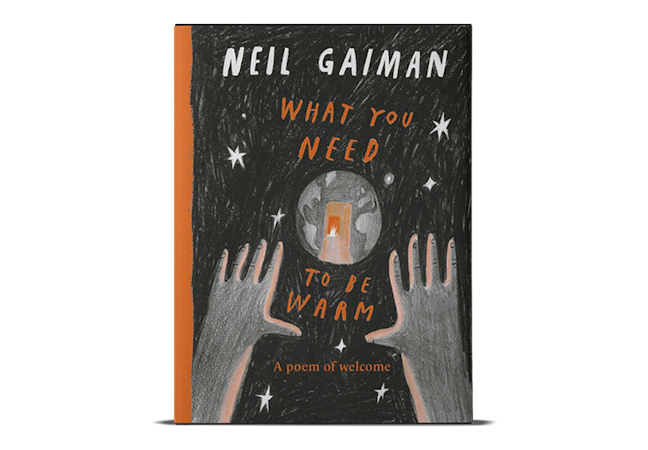
Books by Neil Gaiman
Browse Neil’s latest books for readers of all ages.
Neil Gaiman books for the classroom
Share the world of master storyteller Neil Gaiman with your students.
"Are we human because we gaze at the stars, or do we gaze at them because we are human?" Stardust
"Fairy tales are more than true: not because they tell us that dragons exist, but because they tell us that dragons can be beaten." Coraline
"Go and make interesting mistakes, make amazing mistakes, make glorious and fantastic mistakes. Break rules. Leave the world more interesting for your being here." Neil Gaiman
"If you dare nothing, then when the day is over, nothing is all you will have gained." The Graveyard Book
"You’re always you, and that doesn’t change, and you’re always changing, and there’s nothing you can do about it." Neil Gaiman
"I hope that in this year to come, you make mistakes. Because if you are making mistakes…you’re Doing Something." Neil Gaiman
"The imagination is a muscle. If it is not exercised, it atrophies." Neil Gaiman
Meet Neil Gaiman

Sometimes, when he was smaller, people used to tell Neil Gaiman not to make things up. He never listened. Now he’s written more than twenty-five books and has been given dozens of awards, many of them been given dozens of awards, many of them astonishingly ugly. He’s written television drama and for movies, and for comics. He’s even written “non-fiction”, which he learned is only marginally less made-up than the fiction.
Sometimes he thinks about finding some of those people who warned him of all the awful things that would happen if he kept making things up, and finding out if it’s happened yet, or is still going to happen, and whether he should buy a tin hat and thick boots for protection. In the meantime, he grows pumpkins and keeps on making things up.

15 Best Neil Gaiman Books (Ranked)
By: Author Willow Heath
Posted on Last updated: 24th September 2021
Neil Gaiman is one of the world’s most visible, most successful, and most celebrated authors alive today. Almost all of the best Neil Gaiman books have been adapted to film, the stage, or one of those fancy audiobooks with a celebrity cast.
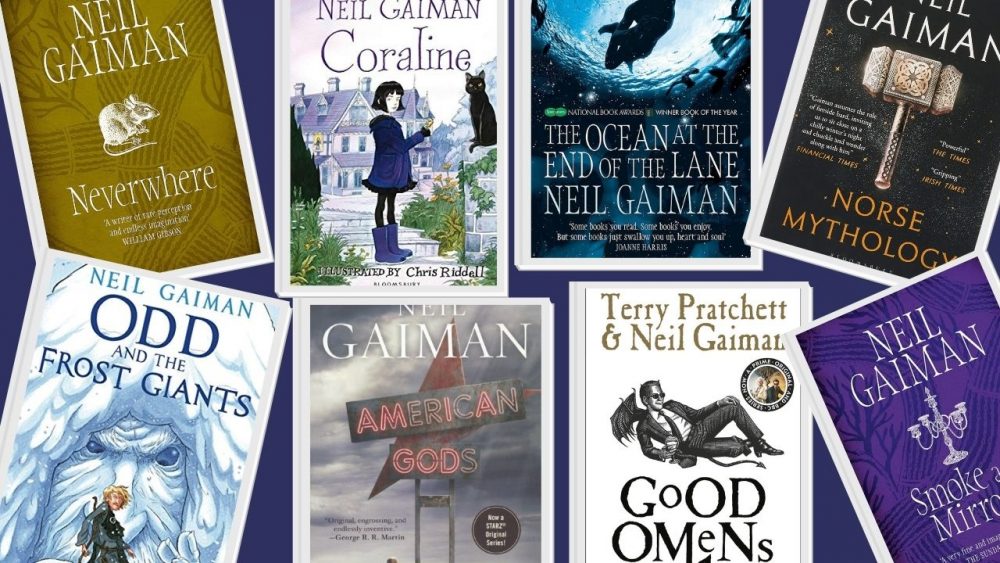
Neil Gaiman is also a jack-of-all-trades kind of writer, having cut his teeth as a journalist, then breaking first into the comics industry.
After comics, he shifted into writing novels for adults and novels for children, as well as short story collections, and even running a successful blog and writing episodes of Doctor Who.
As a lifelong reader of Neil Gaiman’s works, I’ve read almost every book and comic he has ever published, including his books written for little children. As a budding reader, I basked in his infinite imagination, being inspired time and again.
The Best Neil Gaiman Books, Ranked: Worst to Best
What you’ll find here is my ranking of the best Neil Gaiman books. Not his comics or his non-fiction. These are Neil Gaiman’s fiction books. You won’t find Sandman or any of his work for Marvel and DC here.
This list of the best Neil Gaiman books includes his novels for children, his novels for adults, and his short story collections all ranked from worst to best. If it’s good Neil Gaiman prose, it’s on this list.
So, if you’re wondering where to start reading Neil Gaiman, or you’re simply looking for the very best Neil Gaiman books, here is my own ranking. We’re starting with his worst and moving down to his best.
15. Fortunately, the Milk…

It feels a little mean putting this at the bottom but, honestly, Neil Gaiman has never written a flat-out bad book. I also read this book at the age of 23, knowing that the target demographic is very young children.
This is still a lovely Neil Gaiman book, in part because Chris Riddell’s illustrations are utterly gorgeous. This is a real flexing of this writer-artist pair’s imagination muscles.
It’s also lovely because it demonstrates how well Neil Gaiman is able to adapt his ideas to an audience of children rather than adults. To him, readers are readers and he caters to both seamlessly.
Fortunately, the Milk… is a children’s book, heavily and beautifully illustrated by Chris Riddell, which tells the whimsical tale of a father’s journey around the world.
He recounts this tale to his child after returning home from an adventure that should, actually, have been a quick trip to the shops for milk.
It’s a sweet tale with a charming premise and a stegosaurus scientist in a hot air balloon. And no book with a stegosaurus scientist in a hot air balloon can actually be a bad book, can it?
14. Trigger Warning

Neil Gaiman is often at his strongest when writing short stories (as many writers are), but, unfortunately, Trigger Warning is not a great example of this.
While his first two short story collections delivered dark, twisted, and monstrous tales that stick like barbs in the reader’s mind, Trigger Warning is that very worst of books: a forgettable one.
As I’ve already said, Gaiman has never written a bad book but this is far from being one of the best Neil Gaiman books, which is even more of a shame considering his other short story collections do actually rank amongst the strongest of his works. More on that below.
13. Anansi Boys
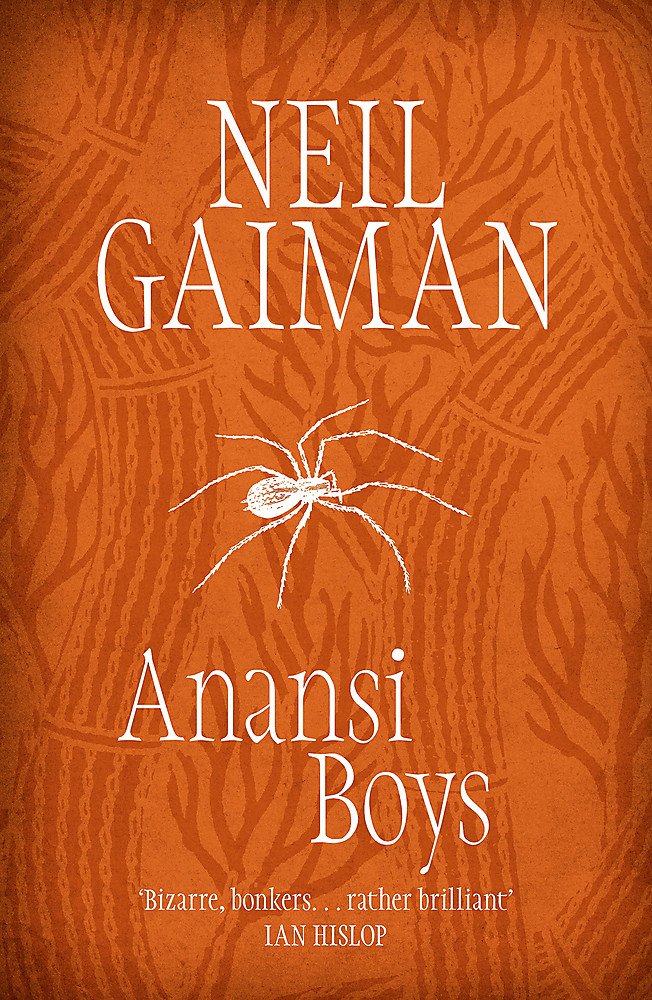
Anansi Boys is one of the more curious Neil Gaiman novels. It overlaps with the world and characters of American Gods but not in any meaningful way. It’s also an impressively bloated novel. Unlike American Gods , however, it has no good excuse for that.
Anansi Boys tells the story of Fat Charlie, a sad and angry Floridian man whose rubbish dad dies while doing karaoke. Turns out that his dad was Anansi the spider god.
From here, the book becomes a rivalry of sorts between Charlie (a wholly unlovable protagonist) and his sinister brother Spider.
Anansi Boys is a rather flat novel, especially compared to Neil Gaiman’s other books for adults. In fact, within that bracket of the best Neil Gaiman books for adults, Anansi Boys is certainly the weakest.
Read More: 11 Best Fantasy Audiobooks
12. Odd and the Frost Giants

Here is a lesser-known Neil Gaiman book. Written for children and charmingly illustrated (once again by the wonderful Chris Riddell), Odd and the Frost Giants is a very slender book set in the world of Norse Mythology (Neil Gaiman’s biggest influence).
Set in a Norse world, frozen over thanks to the Frost Giants who have invaded Asgard, Odd is a young boy who is enlisted to help an eagle, a bear, and a fox (who, if I remember rightly, are Odin, Thor, and Loki) reclaim Thor’s Hammer and liberate Asgard from the Frost Giants.
This is a very charming tale; a story of Norse Mythology told by the writer who has proven himself an expert in that field. Unlike Fortunately, the Milk… , this is one of the best Neil Gaiman books for children that adults can also enjoy just as much.
11. Stardust
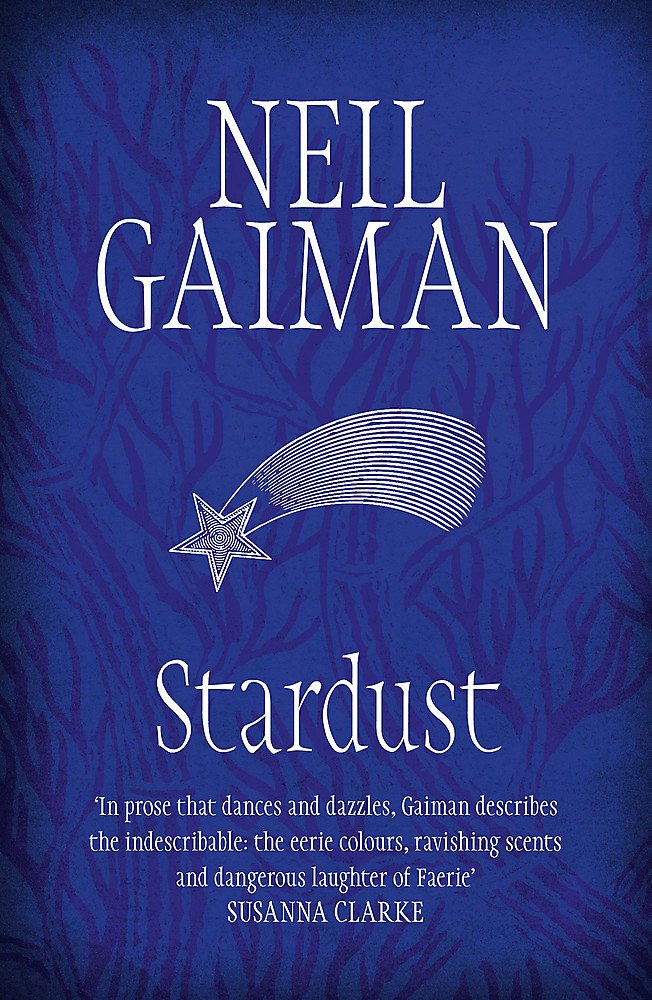
Placing Stardust so far down this list may or may not be a divisive move. I honestly have no idea. But this is not, in my opinion, one of the best Neil Gaiman books. In fact, every creative move that the beloved film adaptation makes is an improvement on the original book, in my opinion.
Stardust is a fairy tale of sorts set in an English village known as Wall (it has a wall).
When our protagonist, Tristan, fails to win the hand of his beloved, he sets off to retrieve a fallen star for her, only to find that the star is a woman whom he enthusiastically binds in manacles and drags across the land.
While it might be a fairy tale of sorts, Stardust is not for children. It has one explicit sex scene and has a hugely unlikeable male protagonist . Neil Gaiman is quite good at writing those.
It’s certainly an original tale and not his worst book but, as I said, this is far from being one of the best Neil Gaiman books of all time.
10. The Sleeper and the Spindle
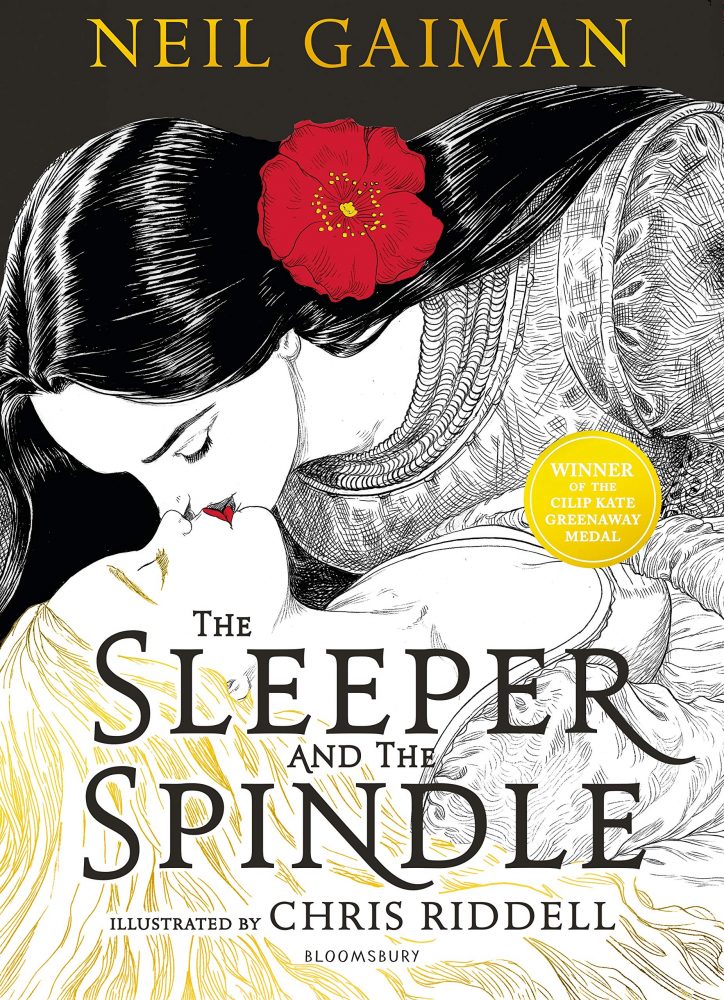
From here on, everything is good. We’re really getting into Neil Gaiman’s best books now. The bottom five are good books but either flawed or lacking the spark of his better books. Consider this a top ten Neil Gaiman books and it begins with The Sleeper and the Spindle .
The Sleeper and the Spindle is a very different beast. As a Neil Gaiman fan, I was very surprised when I first picked it up. The storybook format the gorgeous fairy tale cover made it clear from the start that this was a different kind of Neil Gaiman book: an illustrated fairy tale for adults.
This is exactly what a reimagining of a fairy tale should be. It respins the helpless damsel and the brave hero dynamic into something fresh, modern, and very exciting. It’s a thrill of a story that feels both fantastical and contemporary.
Without a doubt, this is one of the best Neil Gaiman books for its beauty and originality. All that holds it back is that it’s a little on the short side. I was left hungry for more.
9. The Graveyard Book
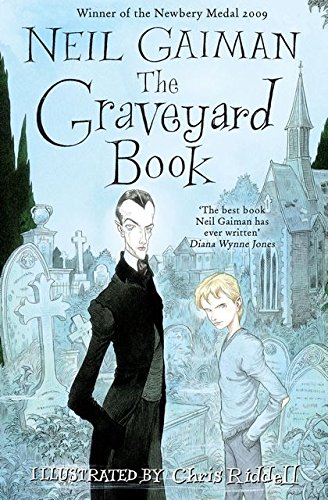
In both its name and its content, this is a nod to The Jungle Book , but told in true dark Gaiman style. Opening with a murder that leaves the dead family’s child alone, The Graveyard Book then opens up into an eccentric tale of a lonely boy growing up in a graveyard.
Like Mowgli being raised by the animals of the jungle, Bod is raised by the ghosts and ghouls of the graveyard. It’s a Burton-esque tale (I’m surprised that he’s never adapted it to screen, actually), and it is a book for children.
In fact, this is one of the best Neil Gaiman books for adults and children to share. Children can get mixed up in the strangeness and the excitement, projecting themselves onto Bod and his journey, while adults can appreciate the character writing, sinister tone, and wonderful world-building.
8. The Ocean at the End of the Lane

The story goes that Neil Gaiman wrote this book while his wife (singer-songwriter Amanda Palmer) was away for several months. He wrote it for her and he wrote it about himself. First, it was a short story, then it grew into a novella. At last, it became a short novel.
The Ocean at the End of the Lane is a surreal and terrifying novel inspired by Neil Gaiman’s own youth. Our protagonist is, in a fashion, him as a child.
Gaiman is often lauded for his boundless and strange imagination and this book, more than any other, feels like a window into his mind. It takes his real world and plunges that world into surreal waters.
Fear and danger and magic and impossible things take hold and you feel like you’re drowning in the unknown.
The Ocean at the End of the Lane is a bizarre novel, and a very good place to start reading Neil Gaiman. It is like a gateway between the world and the mind of this incredible writer.
7. Fragile Things
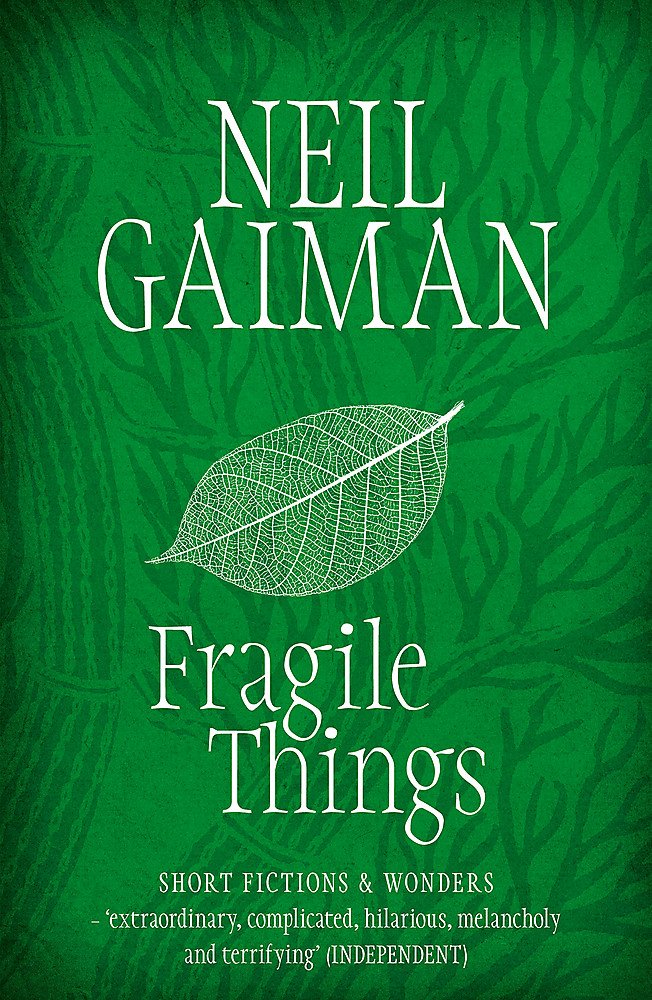
Fragile Things is Neil Gaiman’s second short story collection. While it doesn’t quite live up to the magical and lyrical quality of Smoke and Mirrors (below), it is still a phenomenal collection of tales that demonstrates his strength as a writer.
For new readers, this is one of the best Neil Gaiman books for getting a sense of both his style and his imagination. One of his most famous stories, How to Talk to Girls at Parties , is found here. It was turned into both a comic book and a feature-length film.
Fragile Things also ends with a novella-length sequel to his novel American Gods , set in Scotland and titled The Monarch of the Glen . If you’ve read and loved American Gods , this story is worth the price of the collection alone.
6. Norse Mythology
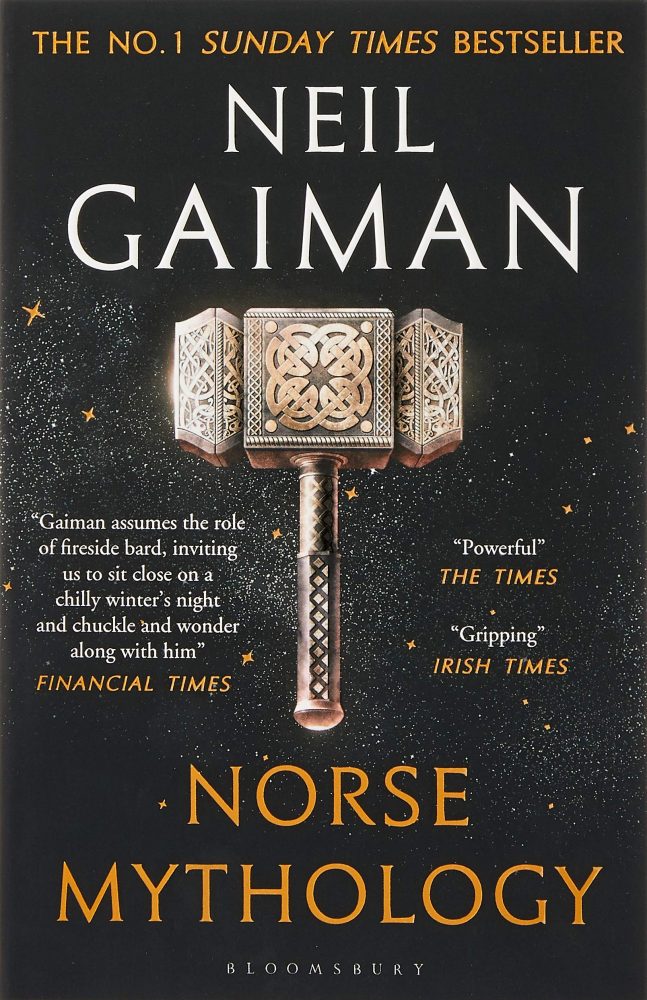
I’m happy to admit that, when this book first released, I was a little disappointed. Shortly before, I read Joanne Harris’ The Gospel of Loki , a charming novel which took all of these stories of Norse Mythology and stringed them together into a single narrative.
After reading The Gospel of Loki , Neil Gaiman’s Norse Mythology almost felt lazy by comparison. But the truth is that this is a very accessible collection of incredible Norse myths.
I’ve found myself returning to this collection time and again, dipping in and out at random to enjoy a fun tale of Loki, Thor, and the other Asgardians.
This is, if you’re not already aware, a retelling of the best Norse myths, told by a writer who is passionate about, and obsessed with, the tales of Norse Mythology. It couldn’t have been written by a better author.
If you want to get a sense of Gaiman’s writing style, removed from his own imagination to a degree, this is one of the best Neil Gaiman books to pick up for a new reader.
5. Coraline
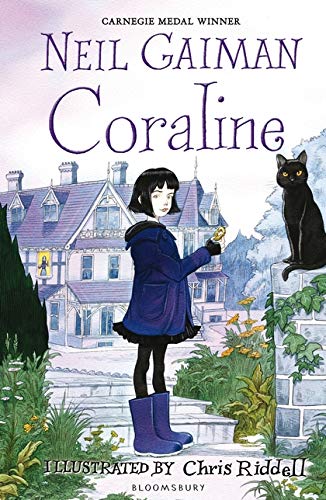
Arguably Neil Gaiman’s most famous book, Coraline was adapted into an incredible stop-motion animated movie by Laika in 2009 (who then went on to make the equally stellar ParaNorman and Kubo and the Two Strings ).
Coraline is a children’s book that adults can enjoy just as much. This is thanks to Gaiman understanding that stories are universal, and that what is scary for children is also often scary for adults.
So, yes, Coraline is scary. It tells the story of the titular Coraline, a girl who moves to a new house with her parents and comes to lash out and rebel a little. She is lured into a mirror world where seemingly kinder versions of her parents exist to welcome her, but all is not what it seems.
Other Mother and Other Father have buttons for eyes and they are hoping to trap Coraline in their reality. The story escalates quickly, with an eccentric cast of supporting characters helping to colour the pages beautifully.
Coraline absolutely holds up as one of the best Neil Gaiman books, for adults or for children, and the film adaptation also remains a complete masterpiece.
4. Good Omens
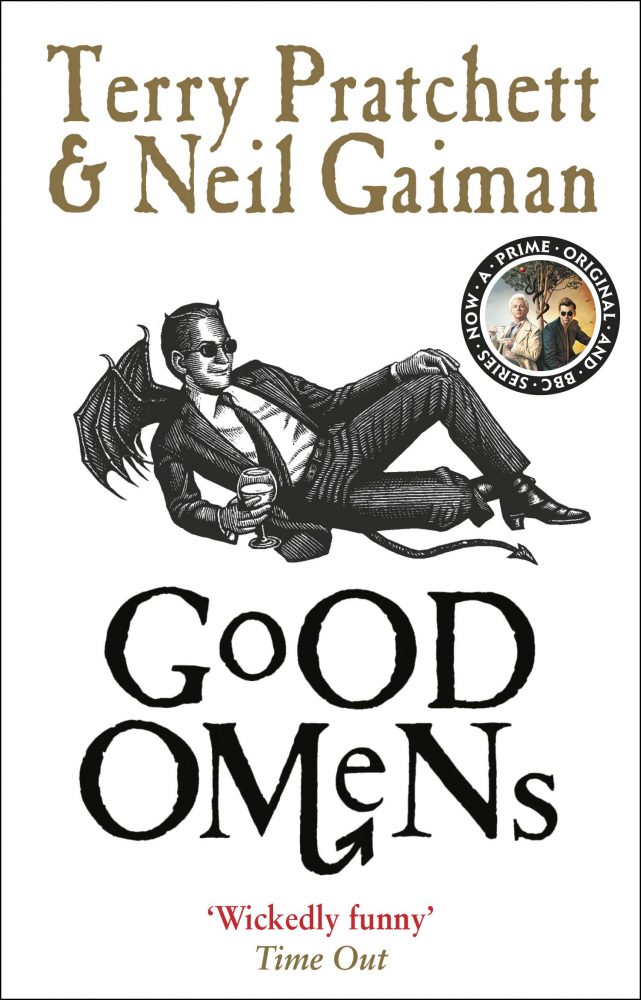
Written as a joint effort by Neil Gaiman and Terry Pratchett, Good Omens is the book on this list with the biggest cult following . People who like this book really, really love it (myself included, of course).
Good Omens is a supernatural comedy novel that begins by parodying the story and tropes of The Omen but is actually far, far larger in scope than that.
Our protagonists are an angel and devil pair who have been friends from the literal beginning, watching the Earth grow and change from the sidelines.
A hilarious and awkward baby swap occurs at the novel’s beginning which causes a frantic panic in heaven and hell and it’s up to the angel and demon Aziraphale and Crowley to watch it unfold but also maybe help fix it.
Good Omens is often considered one of the funniest novels ever written and it truly is laugh-out-loud funny. It has also been adapted into a miniseries with Gaiman himself at the helm and a star-studded cast leading the charge (yes, Michael sheen).
Good Omens is essential reading and, undoubtedly, one of the best Neil Gaiman books. You’ll be hard-pressed to find anyone who disagrees.
3. Smoke and Mirrors

I have already mentioned more than once that Neil Gaiman’s imagination is best seen through the lens of his short stories, and Smoke and Mirrors represents the very best of them.
In fact, Smoke and Mirrors is one of the best Neil Gaiman books, full stop, comics included. It is a genius collection of short stories. So many of these have stuck in my head for a full decade, including the iconic Don’t Ask Jack , Troll Bridge , and Nicholas Was…
If you need convincing of the power of these Neil Gaiman stories, give Nicholas Was… a quick google search. That story has never left me. It is haunting and beautiful and less than 100 words long.
2. Neverwhere
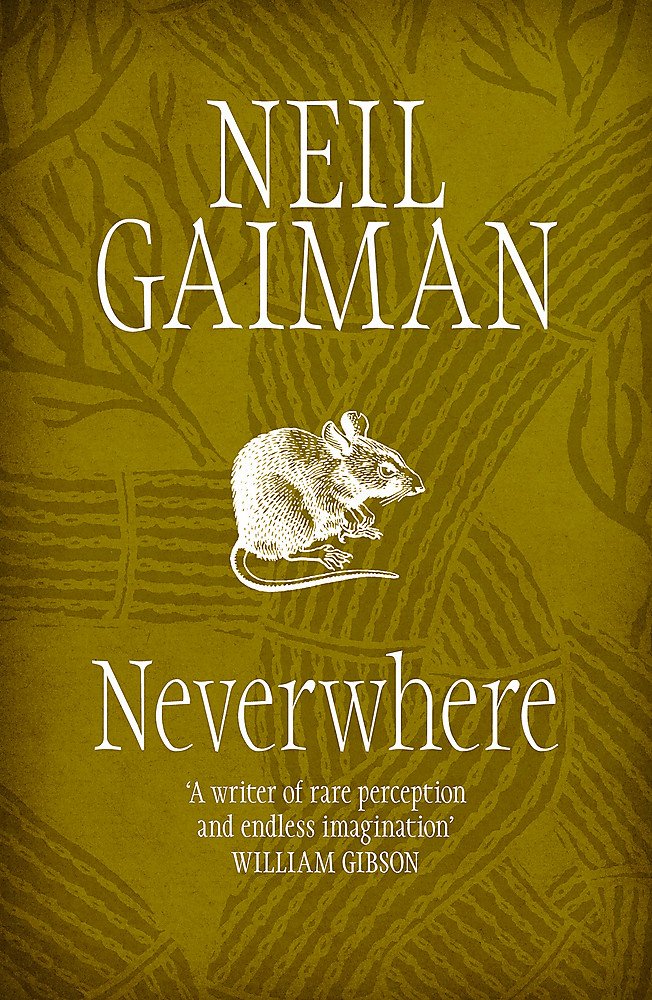
Neverwhere was Neil Gaiman’s first novel. He had already made a massive name for himself in the American comics industry thanks to The Sandman but now he was stepping into the world of the novel, and what an entrance.
Neverwhere has been a massive inspiration to countless authors, and remains one of the best Neil Gaiman books. A near flawless masterpiece of urban fantasy fiction.
Following the story of Richard Mayhew, an unassuming Scot who, after moving to London, ends up meeting and saving the life of a girl named Door. Richard’s actions send him spiralling into London Below: a place of forgetting and magical people.
Neverwhere is a hunt, with Richard and Door as the prey. Inspired by the iconic TFL phrase “mind the gap”, Neverwhere asks us to ponder where things go if they don’t mind the gap. The answer is, of course, London Below. And what a place it is.
1. American Gods

This is it. Of all the best Neil Gaiman books, American Gods comes out on top. This does come with a few caveats, however. American Gods isn’t a perfect novel; it is overly long and its protagonist is frustratingly bland compared to the rest of the book’s cast.
However, flaws aside, American Gods still comes out on top thanks to its big ideas and its setting.
American Gods follows Shadow, a man newly released from prison at the same time that his wife is murdered. Recruited by a man known as Wednesday, Shadow takes an odd road trip across the US, seeing all the stranger sights along the way.
It’s this American road trip setting that first sells the novel. Dripping with a rich and detailed atmosphere, it is a journey that absorbs the reader completely. You live Shadow’s journey wholly and completely, and what a thrillride it is.
American Gods also has a truly masterful central concept. Gods need people to invent them, worship them, and dedicate their lives to them. Without people, gods disappear.
So, what happened when Europeans moved to the New World? Some brought their gods with them while others got abandoned.
There are also new gods; new things to worship: TV and internet and microwaves. There is a war brewing between the old gods and the new, and Shadow is caught in the middle.
This is a fascinating and gripping premise that makes for a perfect novel. American Gods is Neil Gaiman’s best novel. A true masterpiece.
2 hr 14 min
#750: Neil Gaiman and Debbie Millman The Tim Ferriss Show
- Entrepreneurship
This episode is a two-for-one, and that’s because the podcast recently hit its 10-year anniversary and passed one billion downloads. To celebrate, I’ve curated some of the best of the best—some of my favorites—from more than 700 episodes over the last decade. I could not be more excited. The episode features segments from episode #366 "Neil Gaiman — The Interview I've Waited 20 Years to Do" and episode #214 "How to Design a Life — Debbie Millman." Please enjoy! Sponsors: AG1 all-in-one nutritional supplement: https://drinkag1.com/tim (1-year supply of Vitamin D (and 5 free AG1 travel packs) with your first subscription purchase.) Eight Sleep’s Pod 4 Ultra sleeping solution for dynamic cooling and heating: https://eightsleep.com/tim (save $350 on the Pod 4 Ultra) LinkedIn Jobs recruitment platform with 1B+ users: https://linkedin.com/tim (post your job for free) Timestamps: [05:11] Notes about this supercombo format. [06:14] Enter Neil Gaiman. [06:44] What Ian Fleming taught Neil about writing — even when he doesn't want to. [09:56] Neil's biggest rule for writing. [12:41] Neil's process for writing first drafts. [14:30] What Neil aims to accomplish with his second drafts. [14:40] Something Neil noticed when he first started writing and editing with the use of computers. [17:27] Notebooks Neil prefers for writing first drafts. [21:56] Fountain pens Neil has known and loved. [22:57] How Neil's default writing time has changed over the years. [24:56] The value of the Groundhog Day routine. [26:24] Today's methods may not be tomorrow's. [27:53] Lessons learned from Terry Pratchett. [29:22] Parting thoughts and gratitude. [31:21] Enter Debbie Millman. [31:45] How Debbie describes her diverse background to new acquaintances. [33:38] A childhood drawing predicting Debbie's future. [37:54] Debbie's unintentional path to becoming a designer. [45:41] Overcoming initial rejection. [50:04] Debbie's advice to her college self after that first major rejection. [54:25] Empathy vs. feeling slighted by those who reject us. [59:28] Manhattan's influence on Debbie's pursuit of happiness and career. [1:06:42] Debbie's abuse history and its impact on her self-sufficiency and charitable work. [1:12:41] Coping with abuse aftermath and feelings of isolation. [1:18:40] Debbie's experience being called a "corporate clown" and "she-devil." [1:37:00] From lowest point to godmother: a transformative journey. [1:37:38] The world-changing potential of brochures. [1:43:14] The Design Matters podcast: origins and evolution over 12 years. [1:46:46] Milton Glaser's impact on design and Debbie's life. [1:52:16] The "10-Year Plan for a Remarkable Life" exercise. [1:57:51] The nature of hard decisions. [2:07:07] Recommended Design Matters episodes for design novices. [2:07:55] Parting thoughts. * For show notes and past guests on The Tim Ferriss Show, please visit tim.blog/podcast. For deals from sponsors of The Tim Ferriss Show, please visit tim.blog/podcast-sponsors Sign up for Tim’s email newsletter (5-Bullet Friday) at tim.blog/friday. For transcripts of episodes, go to tim.blog/transcripts. Discover Tim’s books: tim.blog/books. Follow Tim: Twitter: twitter.com/tferriss Instagram: instagram.com/timferriss YouTube: youtube.com/timferriss Facebook: facebook.com/timferriss LinkedIn: linkedin.com/in/timferriss Past guests on The Tim Ferriss Show include Jerry Seinfeld, Hugh Jackman, Dr. Jane Goodall, LeBron James, Kevin Hart, Doris Kearns Goodwin, Jamie Foxx, Matthew McConaughey, Esther Perel, Elizabeth Gilbert, Terry Crews, Sia, Yuval Noah Harari, Malcolm Gladwell, Madeleine Albright, Cheryl Strayed, Jim Collins, Mary Karr, Maria Popova, Sam Harris, Michael Phelps, Bob Iger, Edward Norton, Arnold Schwarzenegger, Neil Strauss, Ken Burns, Maria Sharapova, Marc Andreessen, Neil Gaiman, Neil de Grasse Tyson, Jocko Willink, Daniel Ek, Kelly Sl
- More Episodes
- © 2014–2021 Tim Ferriss
More by Tim Ferriss

12 Best Adaptations of Neil Gaiman Stories, Ranked
T he prodigious English author Neil Gaiman has written comic books and graphic novels, children’s books, nonfiction, full-length novels, short stories, and screenplays. His writing appeals to a broad audience, and he has the fanbase — and a pile of literary awards — to prove it. The critically acclaimed DC comic book series The Sandman is being released later this year as a live-action Netflix series starring Tom Sturridge . Also in the pipeline are adaptations of Dead Boy Detectives with Briana Cuoco , Anansi Boys with Delroy Lindo , Whoopi Goldberg , and Fiona Show , and, as was recently announced, The Graveyard Book .
Fans love to see their favorite characters brought to life on the big (or small) screen but turning a written work into a movie can be hit or miss; it all depends on how it’s handled. While we wait (impatiently) for Gaiman’s upcoming projects, it’s a good time to revisit his existing adaptations. Who’s up for a Neil Gaiman marathon?
Updated on July 20, 2023, by Jessie Nguyen:
Good Omens Season 2 premieres on the 28th of July and will bring back not only the fan-favorite divine duo, but also the excitement and thrills of Neil Gaiman's fantastical universe. However, the show isn't Gaiman's first adaptation; rather, it's just one of many that fans may have seen. Thus, now is a great time to catch up.
'How to Talk to Girls at Parties' (2017)
Based on Gaiman’s 2006 short story of the same name, the sci-fi rom-com How to Talk to Girls at Parties revolves around Enn ( Alex Sharp ) meeting – and falling in love with – visiting alien Zan ( Elle Fanning ) in the setting of the 1970s London punk rock scene, managed by Queen Boadicea ( Nicole Kidman ). RELATED: This Neil Gaiman Story Almost Got Adapted by Pixar
Critics were quick to point out that screenwriter-director John Cameron Mitchell had overcomplicated Gaiman’s source material at the cost of narrative consistency, which even a great cast couldn’t salvage. Indeed, the movie is the worst-ranked Neil Gaiman adaptation on Rotten Tomatoes , with an overall approval rating of 48%. Probably best to avoid this film and read Gaiman’s short story instead.
'Beowulf' (2007)
Gaiman co-wrote the screenplay for Beowulf with Roger Avary and director Robert Zemeckis . An adaptation of an Old English poem that tells the story of the titular legendary Geatish warrior ( Ray Winstone ) and his quest to slay the monstrous Grendel ( Crispin Glover ), the movie was filmed in 3D using human characters animated with motion capture technology like that used in The Polar Express (2004) and Monster House (2006).
Despite an all-star cast that included Anthony Hopkins , Robin Wright , Angelina Jolie, and John Malkovich , the film didn't perform at the box office . Many critics celebrated the cast's performances and the groundbreaking visual effects, but some took issue with the screenwriters' interpretation of the epic poem. While Beowulf might not suit everyone’s tastes, it’s worth a watch for its beautiful animation, stunning effects, and talented ensemble of actors.
'Neil Gaiman’s Likely Stories' (2016)
The 2016 four-episode series Neil Gaiman’s Likely Stories is a compilation of four short films based on Gaiman’s unrelated short stories, “Foreign Parts,” “Feeders and Eaters,” “Closing Time,” and “Looking for the Girl.” Gaiman wrote, executive produced, and appeared as himself in the episode “Looking for the Girl.” The discrete stories are a bit Black Mirror -meets- The Twilight Zone . Macabre, supernatural, dark, and imaginative, is precisely what you’d expect from Gaiman.
Directing duo Iain Forsyth and Jane Pollard (they helmed the 2014 Nick Cave documentary, 20,000 Days on Earth ) ensure some consistency across the episodes and generally direct the cast — which includes Monica Dolan , George MacKay , and Paul Ritter well. However, a lack of clarity at times detracts from the source material. Overall, Likely Stories is more of a companion piece to Gaiman’s stories rather than a series of standalone short films.
'MirrorMask' (2005)
Gaiman co-wrote the fantasy film MirrorMask with long-time collaborator and artist Dave McKean who also directed. In a reversal of the typical narrative involving circuses, teenager Helena Campbell ( Stephanie Leonidas ) wants to run away from her parents’ circus to join the real world. After her mother ( Gina McKee ) is hospitalized, Helena finds herself in a fantasy dreamscape populated with monsters and mysterious people. RELATED: Remember When Neil Gaiman Wrote for 'Doctor Who' and It Was Kinda Bad?
A movie that was marketed to both children and adults, MirrorMask ’s sumptuous visual effects won over most critics. Still, others were unhappy with what they perceived to be a lack of narrative substance. New York Times film reviewer Stephen Holden did, however, conclude that while MirrorMask was “an acquired taste,” it was “[t]he embodiment of a cult film.” For that reason, it is worth watching.
'Neverwhere' (1996)
Gaiman scripted Neverwhere as a BBC Two miniseries and wrote a novelization of the series during its production. Set in the magical realm of London Below — which exists parallel to the traditional London Above — Neverwhere follows the adventures of Richard Mayhew ( Gary Bakewell ) after he helps the injured London Below resident, Door ( Laura Fraser ). Trapped in the Below, Richard must find a way back to London Above while being hunted by hired assassins, Messrs Croup ( Hywel Bennett ) and Vandemar ( Clive Russell ).
Budgetary constraints meant the series was shot on video with the intention of it being "filmized" later. Unfortunately, that process never occurred, so the lighting, intended for a film-based production, makes the series appear older than it is. While Neverwhere is an excellent introduction to Gaiman’s wonderful imagination with outstanding performances from a competent cast, if you want the whole experience, you’d do better to read the book.
'American Gods' (2017 - 2021)
Based on Gaiman’s sprawling 2001 novel, American Gods sees ex-convict Shadow Moon ( Ricky Whittle ) join the mysterious Mr. Wednesday ( Ian McShane ) and a panoply of other Old Gods on a trip across America to do battle with the New Gods.
Season 1 was brilliantly realized with showrunners Bryan Fuller and Michael Green lending their trademark visual style to Gaiman’s excellent story. Unfortunately, Season 2 was plagued with problems: Fuller and Green were let go and replaced with Jesse Alexander — who was also fired — and actors Gillian Anderson and Kristin Chenoweth decided not to return. Season 2’s lackluster reception meant that, despite Gaiman ’s vision for a five-season series, American Gods was axed after three (although Season 3 saw a return to form). American Gods brought Gaiman’s work to life in unexpected ways, utilizing a great cast that included Pablo Schreiber , Crispin Glover, and Emily Browning . If you haven’t seen American Gods , it’s worth watching from beginning to end.
'Stardust' (2007)
When Tristan Thorn ( Charlie Cox ) promises his love interest, Victoria ( Sienna Miller ), he’ll venture into the magical realm of Faerie to retrieve a fallen star for her in exchange for her hand in marriage, he gets more than he bargains for when he comes across a real fallen star, Yvaine ( Claire Danes ). RELATED: The Best Live-Action Fairy Tale Movies That Disney Haven't Touched
This faithful adaptation of Gaiman’s 1999 fantasy-adventure novel of the same name features a stellar cast that, in addition to the aforementioned actors, includes Michelle Pfeiffer , Robert De Niro , Henry Cavill , and Sir Ian McKellan as the narrator. Like the book, Stardust successfully combines action and the left-of-center humor that Gaiman is known for, combining multiple tones and genres to create a fantastic viewing experience that holds up 15 years on. Also, if you’ve ever wanted to see De Niro as a pirate in drag, watch this movie.
'Coraline' (2009)
Gaiman’s 2002 novella of the same name was made into a big-screen stop-motion animated feature, Coraline , in 2009. Coraline ( Dakota Fanning ) is a lonely 11-year-old girl who dreams of a life better than the one she knows. When she discovers a secret door in her house, she enters a strange parallel world where things take a dark turn.
Although written as a children’s story, Coraline is a horror film at its heart. Originally developed as a live-action movie, it transitioned to animation after director Henry Selick impressed Gaiman with his extended screenplay. Boasting excellent performances from Teri Hatcher , UK comediennes Dawn French and Jennifer Saunders , and Ian McShane, Coraline remains a favorite with fans and critics. The exquisitely vivid alternate-world palette and imaginative story make Coraline a movie that can be watched repeatedly without losing its entertainment value.
'Lucifer' (2016 - 2021)
The original fallen angel, Lucifer Morningstar ( Tom Ellis ), owes his existence to Gaiman’s The Sandman comic book series. Lucifer , the supernatural crime procedural series, entertained audiences for six seasons before wrapping in September 2021. As befits the character’s creator, Gaiman provided the voice of God in the Season 3 episode, “Once Upon a Time.”
Ellis’ Lucifer is very different from the version that appears in the Sandman comics . It’s more appropriate to say he was “loosely based on” or “inspired by” Gaiman’s Lucifer. Although he’s a DC character, the series did not introduce any other Sandman characters or DC superheroes, which, sadly, meant Lucifer was just another crime procedural.
'DC Showcase: Death' (2019)
Based on the eponymous character created by Neil Gaiman and Mike Dringenberg , DC Showcase: Death introduces viewers to another member of the Endless, Death (voiced by Jamie Chung ), in an animated short film. The film follows the story of Gotham City inhabitant Vincent Omata ( Leonardo Nam ) which is told through flashbacks.
RELATED: 'The Sandman' Characters Straight Out Of Ancient Mythology
This short is remarkable for being the first Endless adaptation for the film and is lauded for the adherence it restores to Gaiman's original source, despite being an original plot. Additionally, with stunning animation and excellent storytelling, the movie is a must-watch for both the Endless Tale and the magnificent fantasy of Gaiman's world.
'Good Omens' (2019 - )
In 1990, Gaiman and his good friend Terry Pratchett set out to write the funniest novel about the end of the world . They succeeded with Good Omens , which, almost 30 years later, was made into a hugely popular Amazon/BBC production. Sadly, Pratchett passed away in 2015 and was not around to witness it.
Gaiman was the showrunner for Good Omens and, in that role, was committed to ensuring the series would be to Pratchett’s liking. A remarkably faithful adaptation, it’s the story of an unlikely duo — the angel Aziraphale ( Michael Sheen ) and the demon Crowley ( David Tennant ) — working together to prevent the apocalypse. Season 1 was packed with a talented cast (many of whom were fans of the book) that included Jon Hamm , Frances McDormand , Miranda Richardson , Adria Arjona , Michael McKean , Brian Cox, and Jack Whitehall .
'The Sandman' (2022)
Based on the comic book written by Neil Gaiman and published by DC Comics, The Sandman follows the titular character ( Tom Sturridge ), also known as Morpheus or Dream, the embodiment of dreams and one of the seven Endless, is captured in an occult ritual in 1916. Following his escape, Dream searches for his misplaced magical relics.
The Sandman is Gaiman's most recent adaptation with his vision and story being faithfully and beautifully adapted which can be shown in the end result, full of dedication and care. Moreover, it has very gorgeous and engrossing plots and locales, and its practically flawless casting elevates it even further.
NEXT: The Best Netflix Shows That Are Longer Than 5 Seasons

Because Neil often gets the same question from many of his readers, we've created this area as a sort of catch-all. Before emailing a question to Neil, check to see if it isn't answered here.
Use the search form below to search for your question first before you send in an inquiry -- many questions have already been answered in the FAQ or elsewhere on the blog.
Or, if you have a question for the mighty Web Goblin (about the site, or other sorts of gobbly pastimes) click here: Site Inquiry .
If you would like to report a broken link, please click here: Site Inquiry .
If you have a question for Neil, click here: Ask Neil
- How do I contact Neil?
- How do I mail Neil something?
- How do I send Neil a book to get signed?
- Who are Neil's agents?
- When will Neil be coming to my town/country?
- How do you pronounce your last name?
- Where is a list of your works?
- What are your tour dates?
- Do you post at really strange hours?
- A question of royalties.
- How do you choose which questions to answer?
- How does one get published?
- How do you write comics?
- Are there any tips you can give me on handling revisions of work?
- Where can I find more information about the Gods in American Gods?
- Who was the forgotten God?
- Does mead taste bad?
- Flub: Loki's smoking habits?
- Flub: Is there a reappearing cigarette?
- I'm a foreigner-- could you explain what Shadow means when he asks the raven "has timmy fallen down another well?"
- Flub: Is the town in Barbados called Bridgetown or Bridgeport?
- Did you write the Anansi story in American Gods or is it based on an earlier African fable?
- What are the anglicisms in American Gods?
- Shouldn't the golem have Emet (truth) written on him instead of Haim (life)?
- Did David Lynch's films have any influence on the book?
- What is Cordelia?
- How do I pronounce Coraline?
- Will you confirm a rumor about the Good Omens movie?
- Where can I get Neverwhere on video?
- Where can I get the soundtrack?
- How can I convert the official PAL video to NTSC?
- Will there be a sequel to the book?
- Which came first: the comic or the book?
- How do you pronounce the star's name in Stardust?
- Am I missing the introduction to Sandman: Book of Dreams?
- What are the Midnight Rose books?
- Will you be re-releasing Angels & Visitations?
- Where can I get Warning: Contains Language?
- What was the poem on Live At The Aladdin?
- Can you tell me about your Matrix story?
- Can you tell me about Ramayana?
- Can you tell me about Crazy Hair ?
- Do you revise your short stories when they are reprinted?
- There's this story I heard you read with a writer, and zombies, and the word "superfluous" in it-- can you tell me what it's called and where to find it?
- Is "Foreign Parts" (from Smoke & Mirrors) a homage to Ray Bradbury's "Fever Dream" (from"The Day it Rained Forever")?
- Could you tell me about the Comic Relief comic?
- Are any early sketches of Dream based on Bono of U2?
- Were you originally offered the Spirit Stallion of the Cimarron Script before John Fusco?
- Have you ever read Three Men in a Boat by Jerome K Jerome? If so, what did ye think?
- Can I make a student film based on one of your comics?
- Have you read Bulgakov's "the Master and Margarita" and has it influenced you at all?
- What do you think the difference is between fantasy and fiction? Is there a difference?
- I want to make a concept album/stage play/short film/set of tee shirts/something to sell based on Sandman. Please give me permission.
- What is the order of the Sandman volumes?
- Was the King of Pain real?
- What happened to Malcolm Jones III?
- Is there Sandman merchandise available?
- Where did the text on the Sandman shirt come from?
- Where may I find a synopsis of Dreamhunters?
- Who can't spell Dalmatians in Brief Lives?
- Is the Death movie really in development?
- Can I make an animated version of your "Dream Hunters" story?
- How would you describe Morpheus's feelings towards Death?
- In Hy Bender's book, The Sandman Companion, on page 199, you comment that one of your favorite sequences to write in the Kindly Ones was when Cluracan vomits up his nemesis... I can't find this sequence anywhere!
- Why didn't Barbie re-appear in The Kindly Ones or The Wake?
- Why don't they sell Sandman tees anymore at Hot Topic?

My current crusade is to make sure creative people have wills. Read the blog post about it, and see a sample will.

COMMENTS
Author Neil Gaiman visits Zoellner Arts Center. "Coraline," "Good Omens" and "American Gods," are all a part of author Neil Gaiman's repertoire of literature. The author visited Baker Hall on Nov. 12 to speak about his work, answer questions and sell his signed books to fans. Gaiman spoke to a nearly sold-out crowd about a few of ...
3 weeks, 1 day, 16 hours, 42 minutes, 8 seconds. The official website of Neil Gaiman.
Embark on a literary journey with bestselling author Neil Gaiman as he shares stories from a career that covers fantasy, science fiction, mystery, and horror. Named one of the most influential people in the world by Time Magazine in 2023, Gaiman elevated an entire genre with The Sandman , widely considered one of the most influential graphic novels ever.
Neil Richard MacKinnon Gaiman (/ ˈ ɡ eɪ m ən /; born Neil Richard Gaiman on 10 November 1960) is an English author of short fiction, novels, comic books, graphic novels, audio theatre, and screenplays. His works include the comic book series The Sandman and the novels Good Omens, Stardust, Anansi Boys, American Gods, Coraline, and The Graveyard Book.He co-created the TV series adaptations ...
Neil Gaiman is a fierce supporter of libraries. The author of American Gods, Neverwhere, Good Omens, The Sandman, Coraline, and so many more has had a lifelong love affair with reading. And he credits librarians for fostering his curiosity about books and learning at a young age. Gaiman spoke with I Love Libraries recently about libraries, comic books, book banning in the U.S., movies, and more.
By Susen Shi, Young Adult Librarian. Acclaimed writer Neil Gaiman was born on November 10, 1960 in Hampshire, England. His love of the written word started at a young age when he wrote his first poem at the age of three. His parents would often pat him down before social events to make sure he wasn't squirreling away any books.
As summer winds and the tourism season slows in Maine, the celebrity sightings throughout Vacationland are also likely to wane.Maine was popular again this year amongst actors and sports stars, with visits from people like Brett Favre to a-list actor Steve Carell.Another big name in the world of comic books visited the Pine Tree State recently, as author Neil Gaiman shared some details on ...
Neil Gaiman. 1,221,330 likes · 1,260 talking about this. Will eventually grow up & get a real job. Until then, will keep making things up & writing them...
A Walking Tour of the Shambles. Gene Wolfe and Neil Gaiman invite you to tour the Shambles, that historic old Chicago neighborhood which miraculously survived the Great Fire of 1871. ('Ya can't burn Hell,' as one local politician laughingly remarked.) Uniquely Chicago, the Shambles offers an array of delights for the intrepid sightseer: Cereal ...
books. Out in US - Hardback! Out in Netherlands - Hardback! My current crusade is to make sure creative people have wills. Read the blog post about it, and see a sample will.
Neil Gaiman's Wheel of Worlds #0 (anthology, Tekno Comix, 1995) The entire issue is plotted by Gaiman and John Ney Rieber, with various writers scripting each individual story: The framing sequence, "Adam Cain", is written by John Ney Rieber and drawn by Shea Anton Pensa. "Lady Justice" is written by C. J. Henderson and drawn by Michael Netzer.
Neil Gaiman ( @neilhimself) is the bestselling author and creator of books, graphic novels, short stories, film and television for all ages, including Neverwhere, Coraline, The Graveyard Book, The Ocean at the End of the Lane, The View from the Cheap Seats and the Sandman series of graphic novels. His fiction has received Newbery and Carnegie ...
The question of why we read and what books actually do for us is as old as the written word itself, and as attractive. Galileo saw reading as a way of having superhuman powers. For Kafka, books were "the axe for the frozen sea within us"; Carl Sagan held them as "proof that humans are capable of working magic"; James Baldwin found in ...
Published May 17, 2023 Updated May 19, 2023. In his stories of horror, humanity and uncomfortable truths, Neil Gaiman is never afraid to go into dark places looking for the light. But while he ...
So, whether you're young, old, or in between I hope we can all have fun. Neil Gaiman is the author of American Gods (4.11 avg rating, 941612 ratings, 47788 reviews, published 2001), Coraline (4.12 avg rating, 703678 ratings, 3...
The Graveyard Book is a young adult novel written by the English author Neil Gaiman, simultaneously published in Britain and America in 2008. The Graveyard Book traces the story of the boy Nobody "Bod" Owens who is adopted and reared by the supernatural occupants of a graveyard after his family is brutally murdered.. Gaiman won both the British Carnegie Medal and the American Newbery Medal ...
Meet Neil Gaiman. Sometimes, when he was smaller, people used to tell Neil Gaiman not to make things up. He never listened. Now he's written more than twenty-five books and has been given dozens of awards, many of them been given dozens of awards, many of them astonishingly ugly. He's written television drama and for movies, and for comics.
9. The Graveyard Book. In both its name and its content, this is a nod to The Jungle Book, but told in true dark Gaiman style. Opening with a murder that leaves the dead family's child alone, The Graveyard Book then opens up into an eccentric tale of a lonely boy growing up in a graveyard.
Visit Neil Gaiman's page at Barnes & Noble® and shop all Neil Gaiman books. Explore books by author, series, or genre today. ... Neil Gaiman 3; 6 - 8 Years; Subject. Awards; Fiction; Graphic Novels & Comics; Kids; Literature; Science Fiction & Fantasy; Social Sciences; Teens & YA;
The Neil Gaiman Reader. The Ocean at the End of the Lane. The Quite Nice and Fairly Accurate Good Omens Script Book. The Sandman: Book of Dreams. The Sleeper and the Spindle. The Truth Is a Cave in the Black Mountains. The View from the Cheap Seats: Selected Nonfiction. Trigger Warning. Unnatural Creatures.
[06:14] Enter Neil Gaiman. [06:44] What Ian Fleming taught Neil about writing — even when he doesn't want to. [09:56] Neil's biggest rule for writing. [12:41] Neil's process for writing first drafts. [14:30] What Neil aims to accomplish with his second drafts. [14:40] Something Neil noticed when he first started writing and editing with the ...
Books About Gaiman and His Work Books Interviewing Gaiman Books Quoting and Magazines With Original Quotes by Gaiman: Neil Gaiman Visual Bibliography This site aims to record Neil Gaiman's published works as thoroughly as possible. "One of the really, really, really gloriously obsessive fans of mine" - Neil Gaiman on Late Night with Seth Meyers ...
The medievals inserted tiles in a random fashion. It's easy to envisage a special part of Neil Gaiman's Neverwhere here. It's nighttime and the character called Old Bailey has dragged a body tied onto a baby carriage to the base of this wall. He carries the body up onto the wall.
Indeed, the movie is the worst-ranked Neil Gaiman adaptation on Rotten Tomatoes, with an overall approval rating of 48%. Probably best to avoid this film and read Gaiman's short story instead.
FAQs. Frequently Asked Questions. Because Neil often gets the same question from many of his readers, we've created this area as a sort of catch-all. Before emailing a question to Neil, check to see if it isn't answered here.